Nestled in the heart of Provence, Eygalières is a picturesque village that epitomises the quintessential charm of the French countryside.
I drove through this Provençal village several times but never stopped. On our last trip to Provence, Eygalières was on our list of must-sees in the Alpilles region. We took advantage of a beautiful sunny day at the end of October to discover the old streets and breathtaking views. Follow me as we explore old Eygalières!
Watch this short video on the Alpilles!
Why you should visit Eygalières
With its origins stretching back into the mists of time, this quaint village is perched elegantly amidst the breathtaking backdrop of the Alpilles mountains, offering stunning panoramic views that captivate the heart and soul.
As we wandered through the cobblestone streets of Eygalières, we were greeted by the remnants of a bygone era, from the ruins of the old feudal castle that once vigilantly guarded the village to the ancient clock tower that stands as a testament to the village's rich history.
The tower, built from the castle's ruins, overlooks the village and offers an unparalleled vista of the surrounding plains and the majestic Mont Ventoux.
Our stroll through Eygalières revealed a tapestry of historical and architectural marvels.
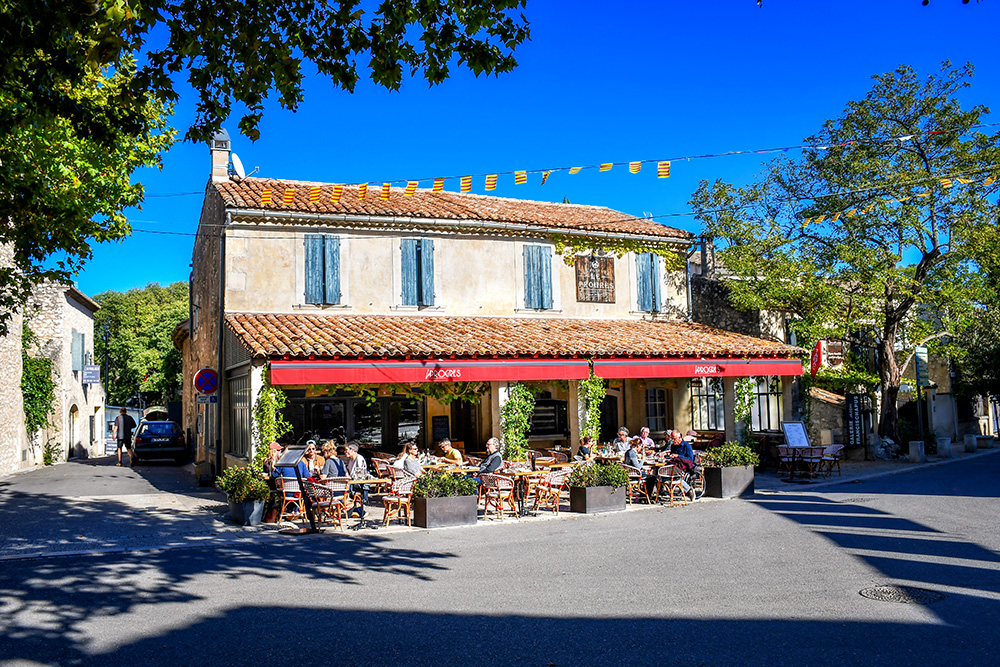
In the village centre © French Moments
Old towers and chapels
The village is also home to the iconic Chapel of Saint-Sixte, an emblem of Provençal Romanesque art, set against a landscape so quintessentially Provence that it seems to leap straight out of a painting.
This ancient chapel, surrounded by solemn cypress trees, has watched over the village surroundings since the 12th century, offering a serene spot for reflection and admiration.
Eygalières is not just a village; it's a living, breathing celebration of Provençal culture and history.
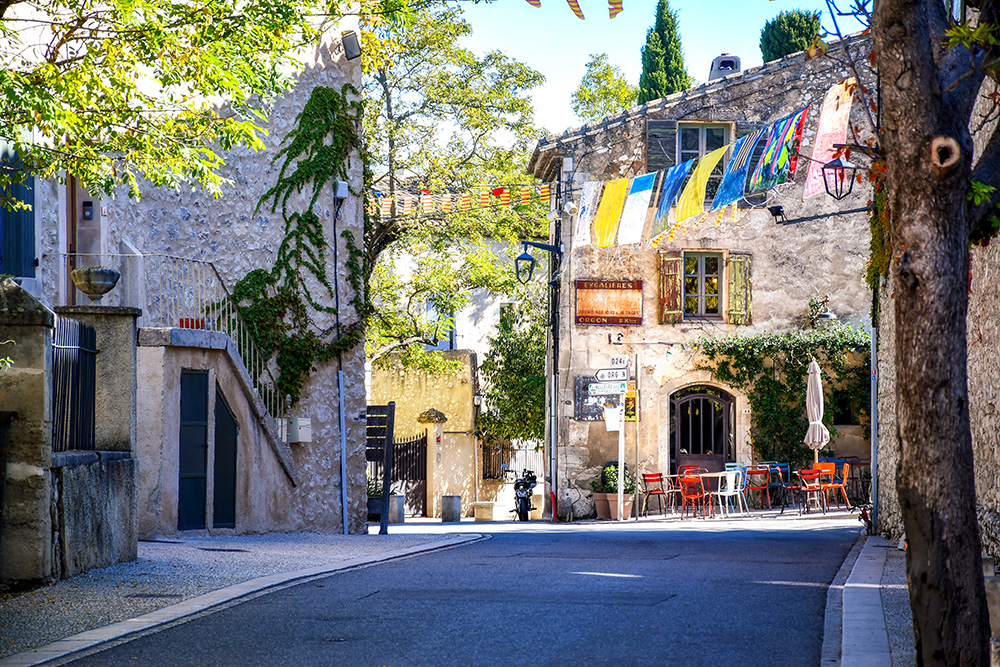
In the village © French Moments
From its historic buildings and charming streets to the friendly faces that greet you at every turn, Eygalières invites you to immerse yourself in the timeless beauty of Provence.
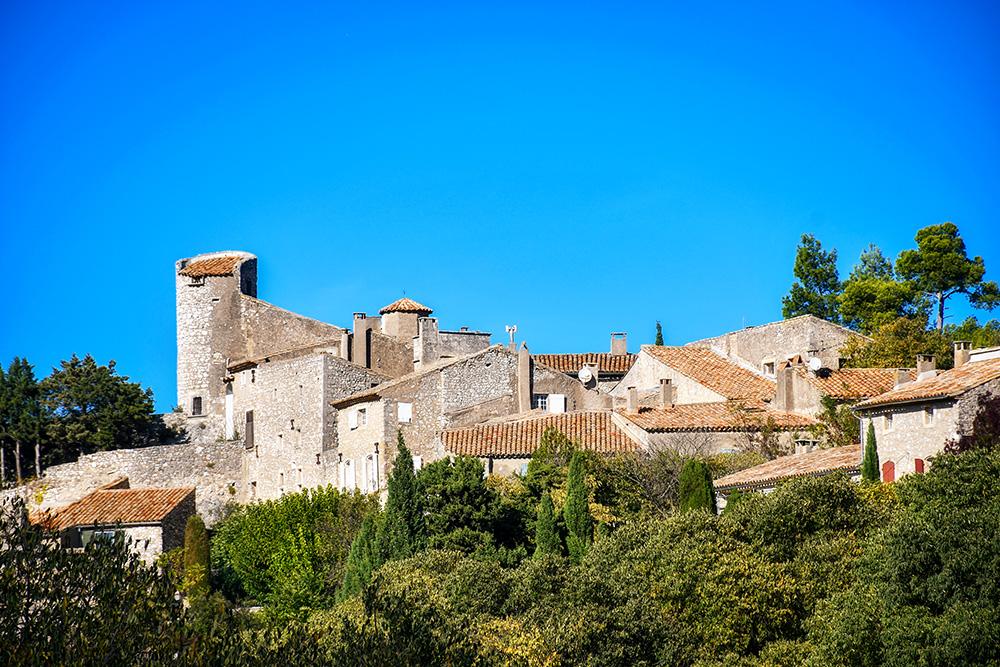
The upper village © French Moments
Whether you're exploring its historic sites, enjoying the local cuisine, or simply basking in the beauty of its landscapes, Eygalières is a place that captures the essence of the Provence, promising memories that will last a lifetime.
Plan your trip
- 🛏 Find the best accommodations in Eygalières on Booking.com
- 🚙 Rent a car in Avignon or Marseille-Provence Airport
- 🙋♀️ Get the PASS CÔTE D'AZUR and take your pick from more than 100 amazing experiences!
- 🤩 Visit the beautiful Provençal mountain of the Alpilles
- 🚘 Discover Provence in a 2CV. Stroll along exceptional roads and enjoy a piece of Luberon all to yourself!
- 🍷 Join a Full-Day Wine Tour of Les Baux-de-Provence from Marseille
- 📚 Read the DK Eyewitness Provence and the Côte d’Azur Travel Guide
- 🗺 Download the touristic map of Eygalières
- 🚻 Public toilets are located at 44 Avenue des Molassis.
- 🚗 Park at the entrance to the village centre: Avenue Léon Blum (coming from Saint-Rémy or Aureille).
Discover Eygalières
The best way to start visiting the village is to park in the free car park on Avenue Léon Blum. From there, we made our way to the town hall on Place Marcel Bonein.
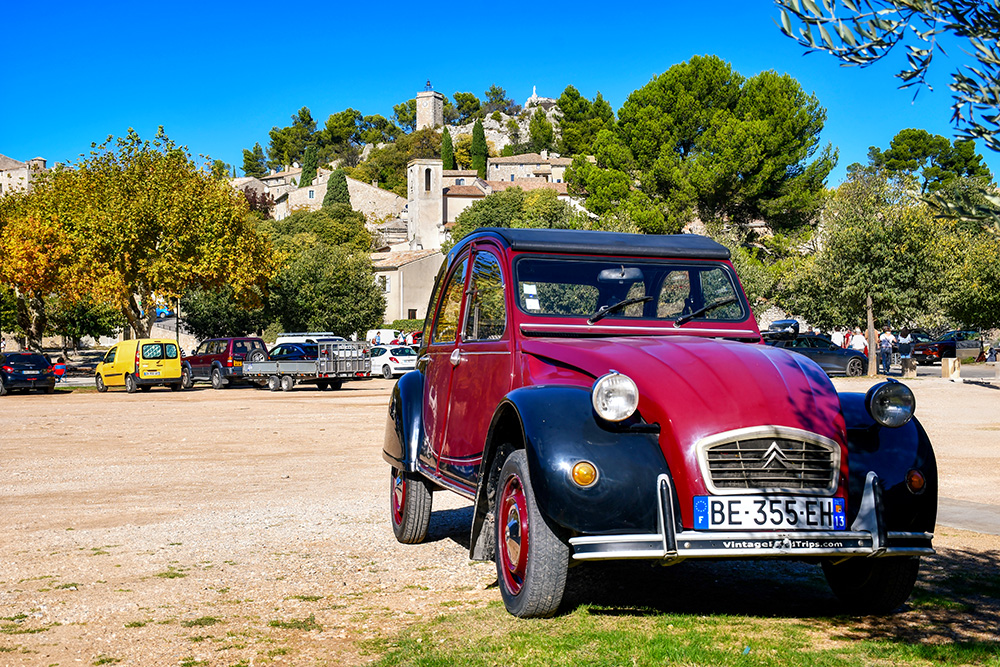
Car park of Avenue Léon Blum in Eygalières © French Moments
Watch my guided walk of Eygalières
A 32-minute video that starts in the lower district of Eygalières and climbs to the castle hill at the top of the village.
The Town Hall
The town hall was built in 1912, marking the modernisation of the village and the fact that Eygalières had expanded beyond the perched village.

The town hall of Eygalières © French Moments
Place Marcel Bonein is where the Provençal market is held every Friday morning.
Here, you can find all the local produce: fruits and vegetables from Provence, cheeses, oil, honey, and more.
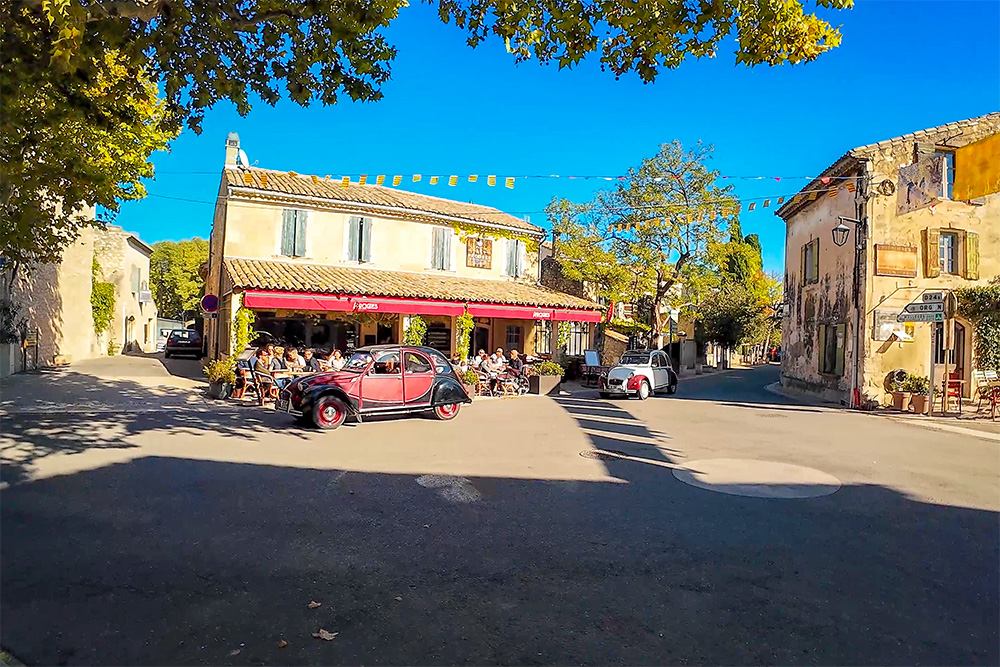
Place Marcel Bonein © French Moments
Rue de la République
The one-way street of Rue de la République is where you will find the shops and restaurants of Eygalières.

Rue de la République © French Moments
Fontaine de la République
The Fontaine de la République overlooks the Impasse de la Vieille Fontaine.
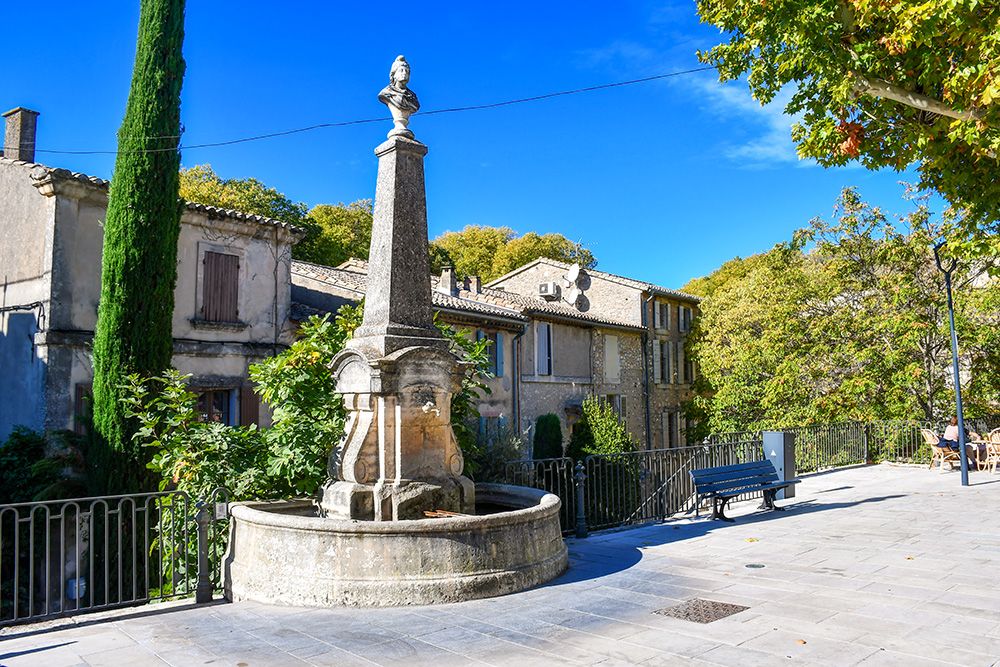
Fontaine de la République © French Moments
The fountain, dating back to 1900, is topped with a Marianne and pays tribute to the French Republic.
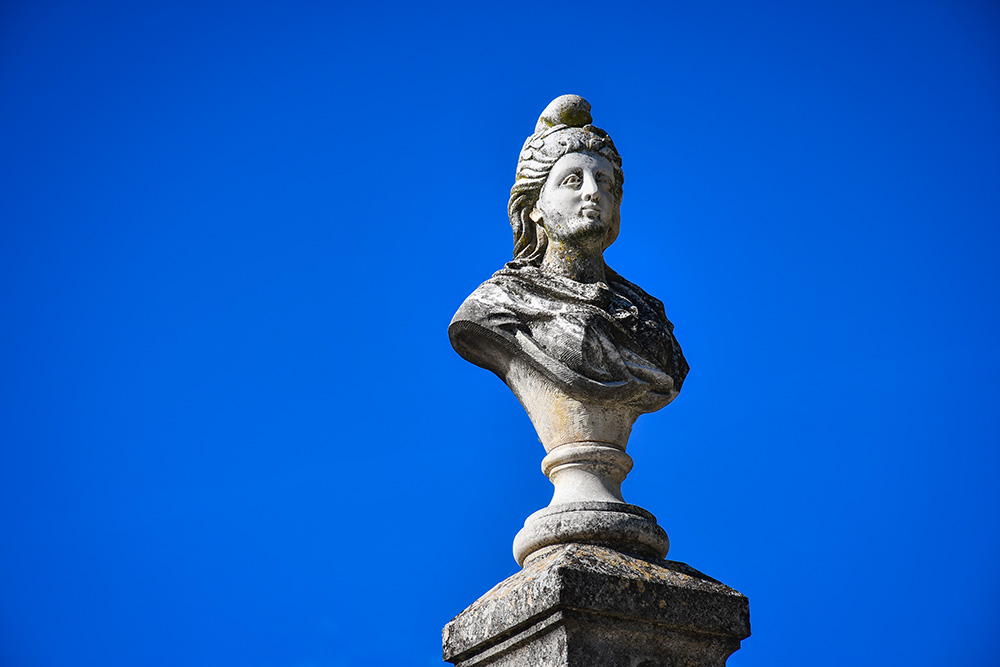
Marianne © French Moments
The fountain was initially located in the middle of the "Grands Jas" boulevard near the town hall but was moved here after 1945.
The shops and restaurants of Eygalières
Since we were walking during lunchtime, most of these shops were closed, as is the tradition in France.
Eygalières is a lively village that has been fortunate enough to keep its shops open.
Thus, you will find a bakery, a butcher, a greengrocer, a cheese shop, a delicatessen, a mini-market, a newsagent, real estate agencies, a pharmacy, the public library, and the tourist office, where you can find all the practical information for staying in Eygalières.

The local boulangerie © French Moments
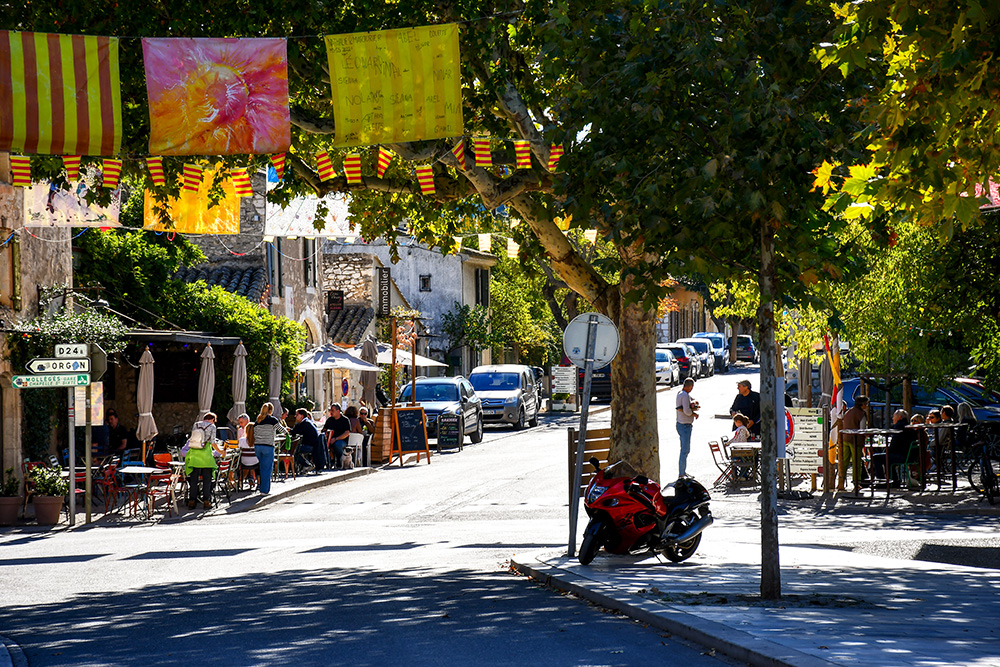
Rue de la République © French Moments
Eglise Saint-Laurent
The Saint-Laurent church was inaugurated for Christmas 1905 to replace the old church of the upper village.
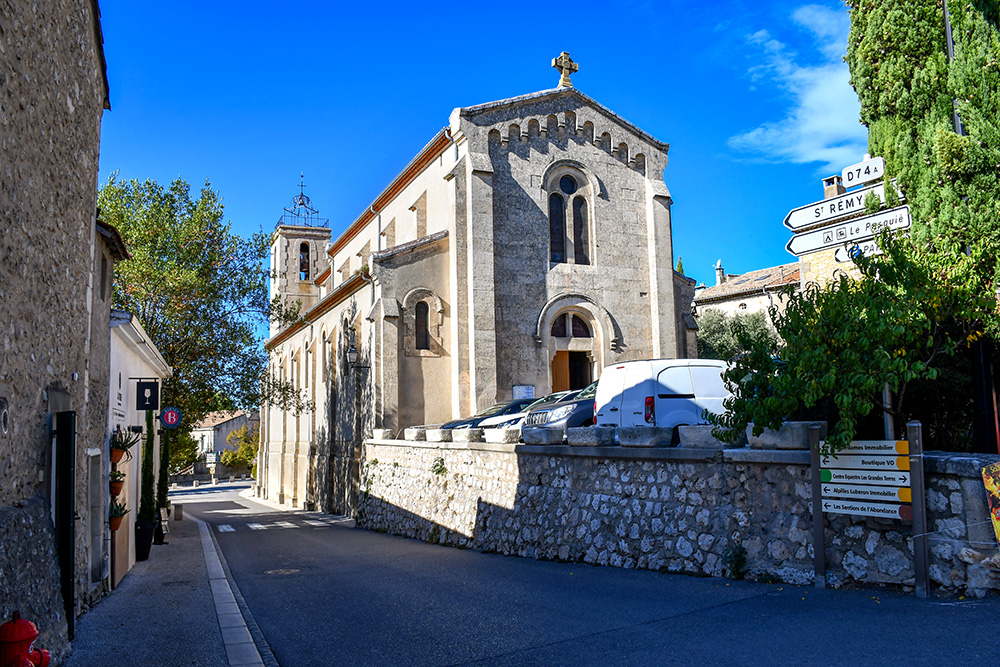
Eglise Saint-Laurent © French Moments
The Catholic church is in the Neo-Romanesque style, and its wrought-iron bell tower was installed at the end of the 20th century.
We took a peek inside the church. The interior is Neo-Romanesque, and because the church is relatively recent, there isn't really any architectural interest.
The High Street of the Upper Village
We now enter the old village via the Rue du Docteur Roque Johannès, which serves as the high street of the village.
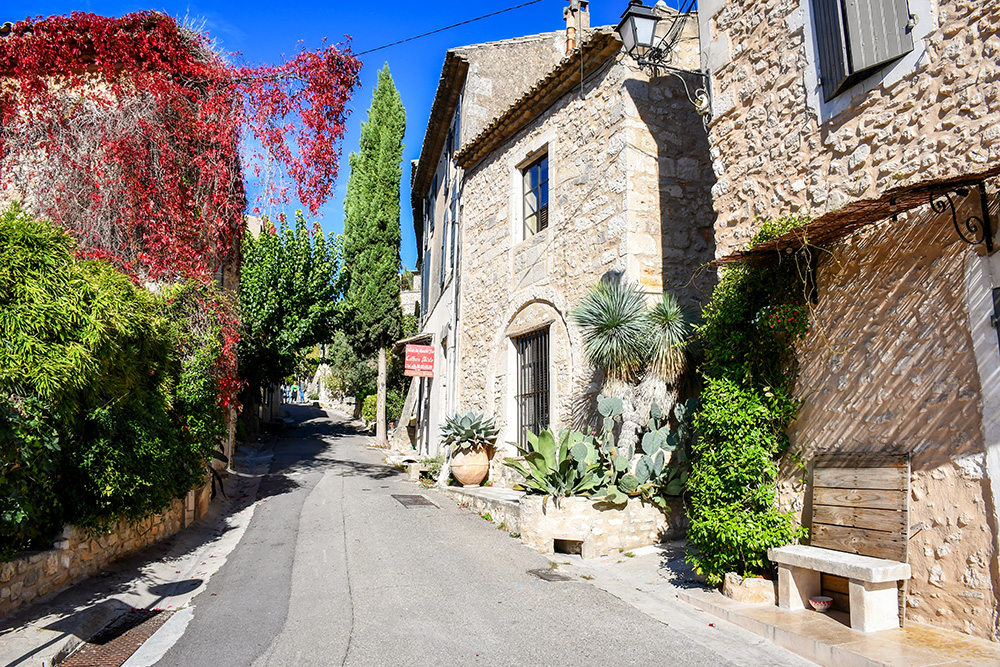
The High Street © French Moments
The street gently slopes up to the top of the village, marked by the site of the old castle.
During the discovery of the old village, the eye is constantly drawn to the pretty ancient houses along the winding alleys, the fountains, washhouses, and oratories.
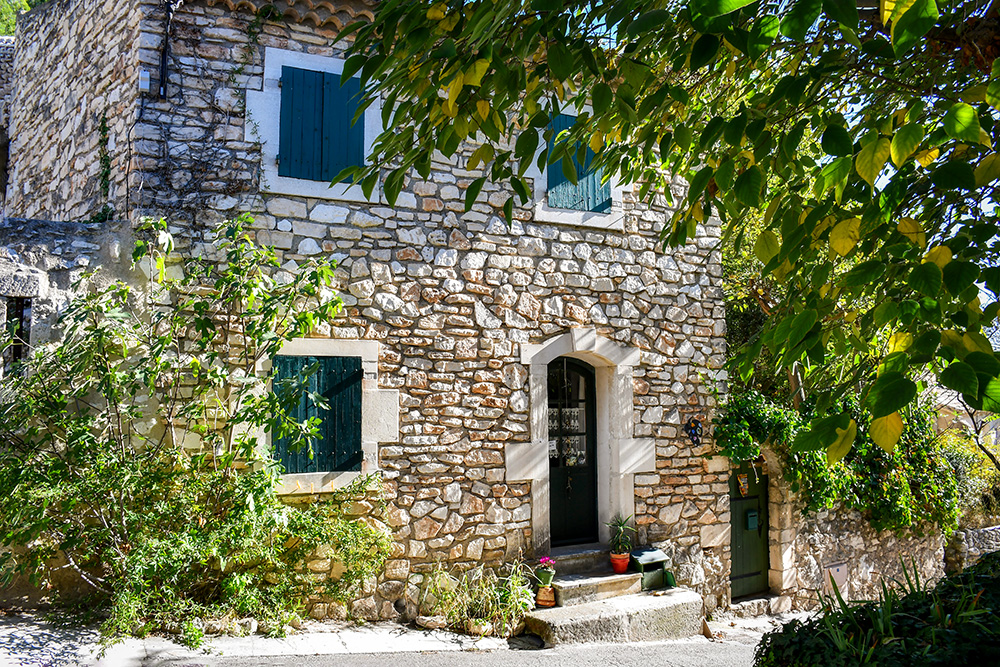
Stone façade in the High Street © French Moments
The street runs alongside beautiful houses with sculpted doors and some houses are still in ruins, particularly towards the very top of the village.
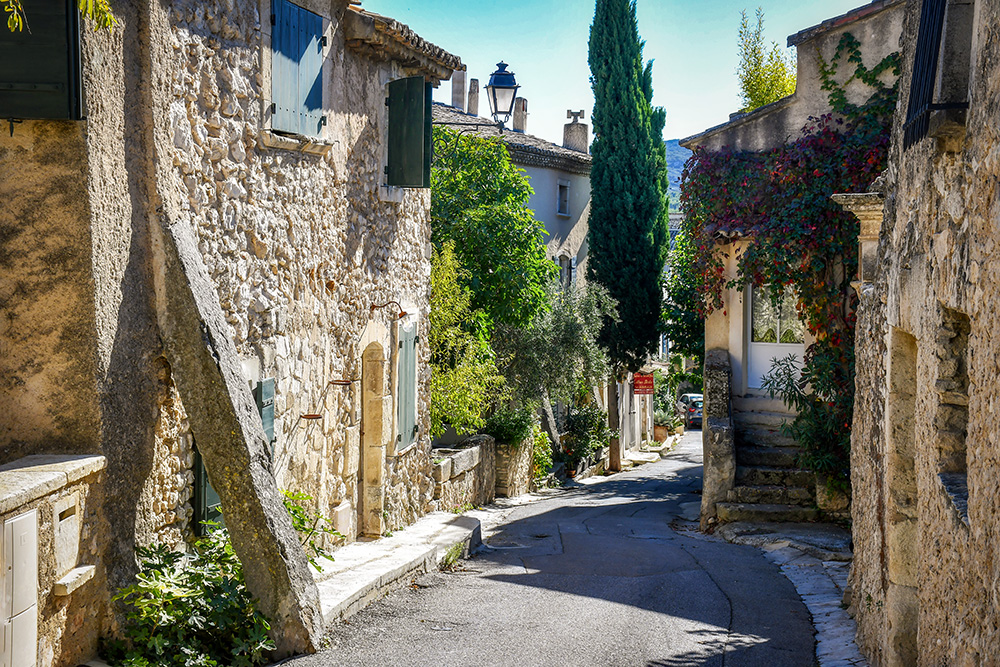
The High Street © French Moments
It's interesting to note that here, the facades do not display pastel tones because they reflect the very limestone rock of the Alpilles.
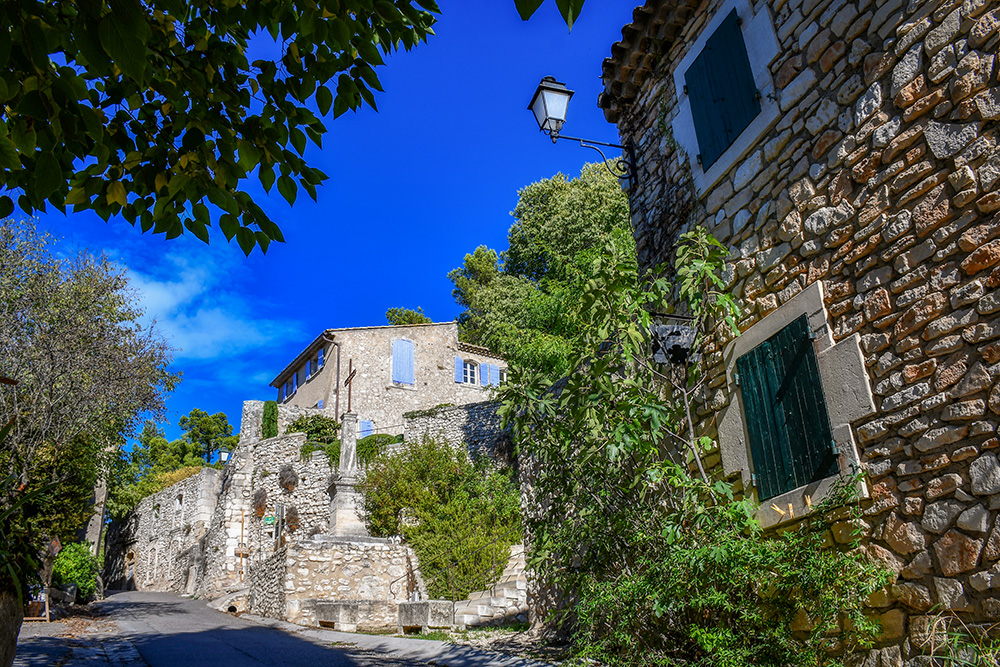
In the High Street © French Moments
Place des Pago-Tard
The Place des Pago-Tard is a small square created at the end of the 18th century in place of the fortified gate of Saint Christol (or Saint Christophe).
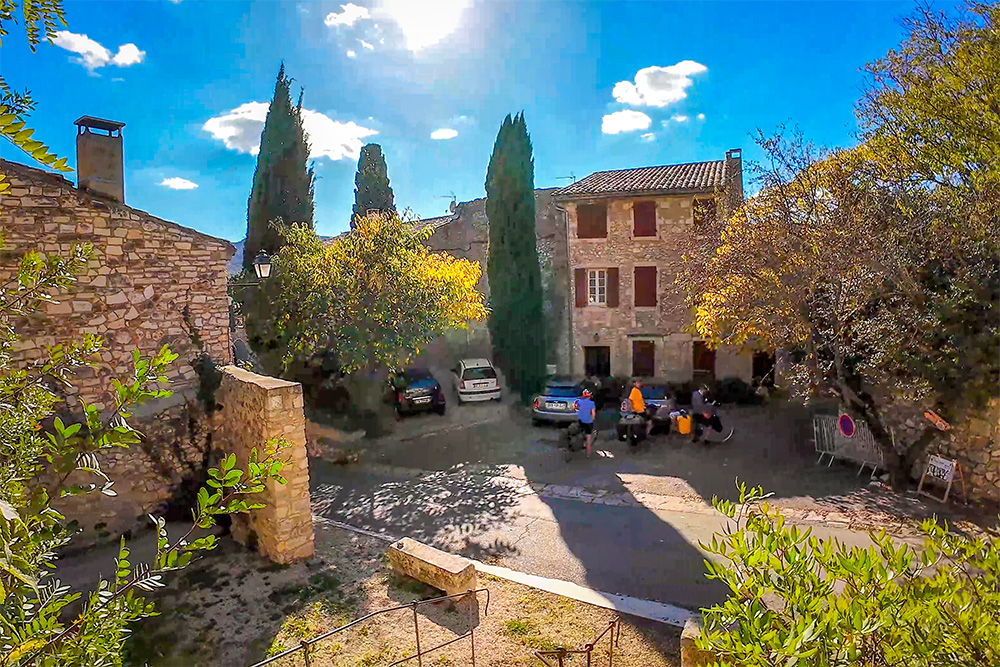
Place des Fago-Tard © French Moments
This is where the village market used to be held a long time ago.
The small square refers to the inhabitants of the perched village.
As a relative political and social stability settled around the 16th century, the built-up area of Eygalières gradually extended towards the plain to the south.
The last occupants of the upper town were agricultural workers.
These were the most modest populations who did not have the means to build a new home and who only paid their debts after the harvest, hence their nickname of “pago-tard” or “paye-tard” in French, which means “late payers”.
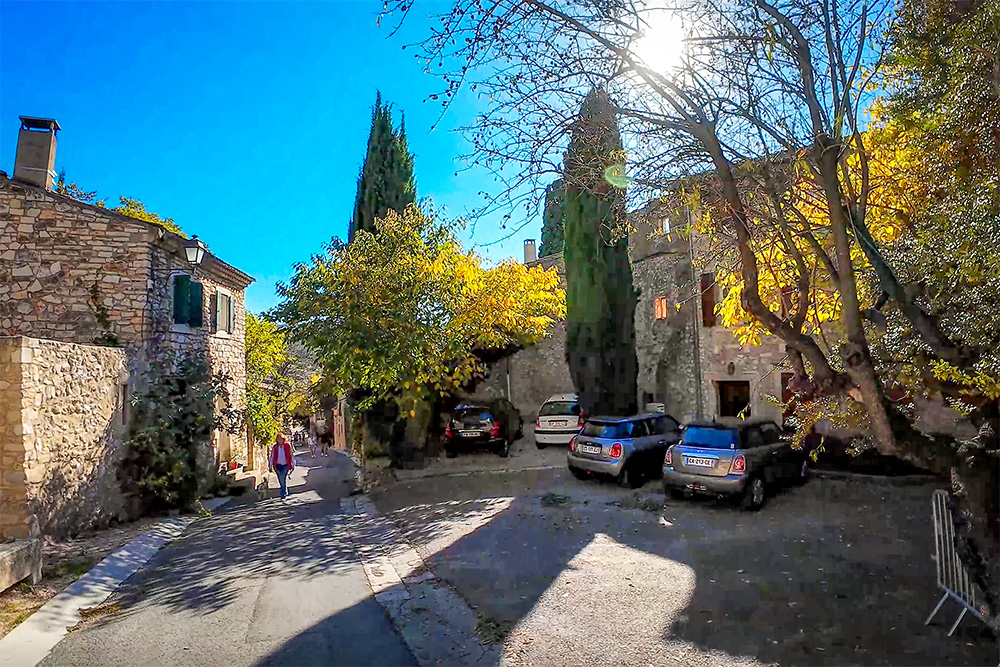
Place des Fago-Tard © French Moments
Calvary of Place Saint-Christol
The Calvary of Place Saint-Christol is a monumental cross from the early 18th century.
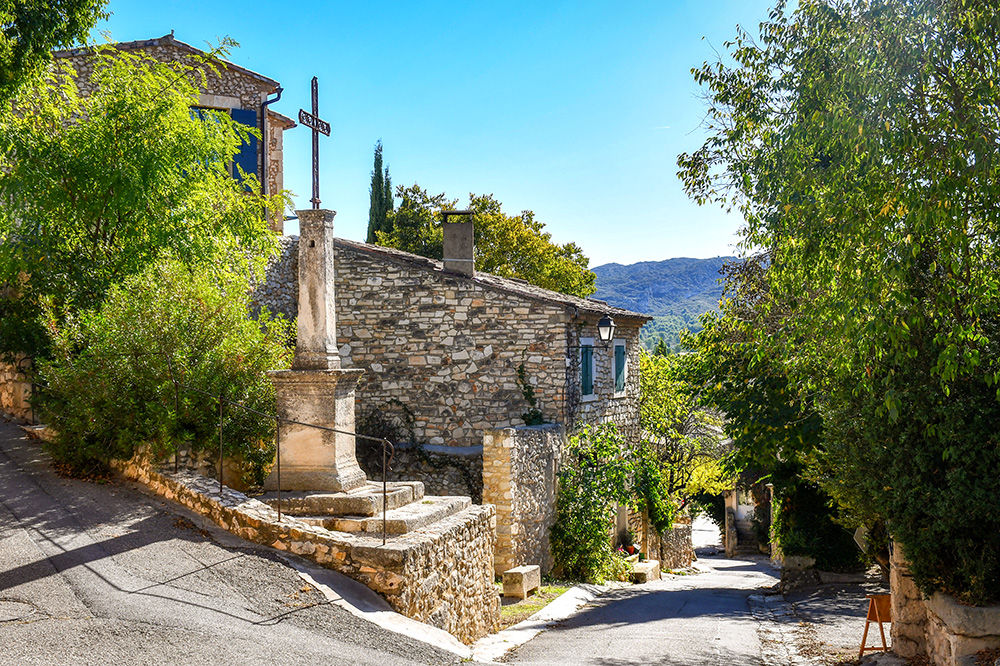
The calvary of Place Saint Christol © French Moments
The picture-perfect view of the cross and the stone houses in the background feels like being in a Provençal nativity scene setting.
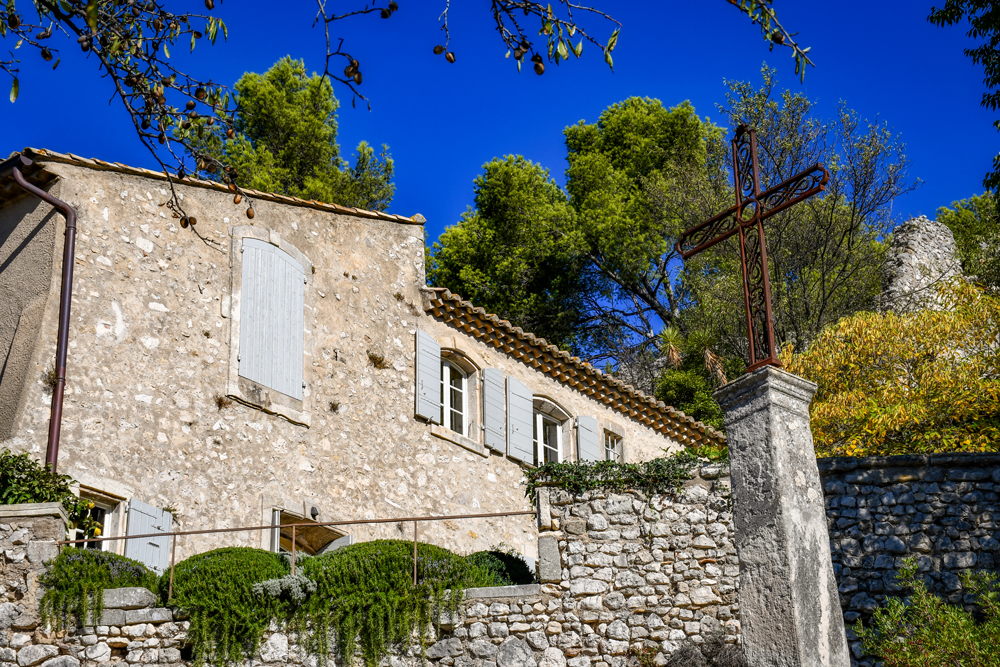
The calvary © French Moments
Isnard Mansion
The Hôtel Isnard a beautiful Renaissance mansion built in 1542 by Pierre Isnard, a lawyer at the Parliament of Provence and a member of one of the most prominent families of the village.
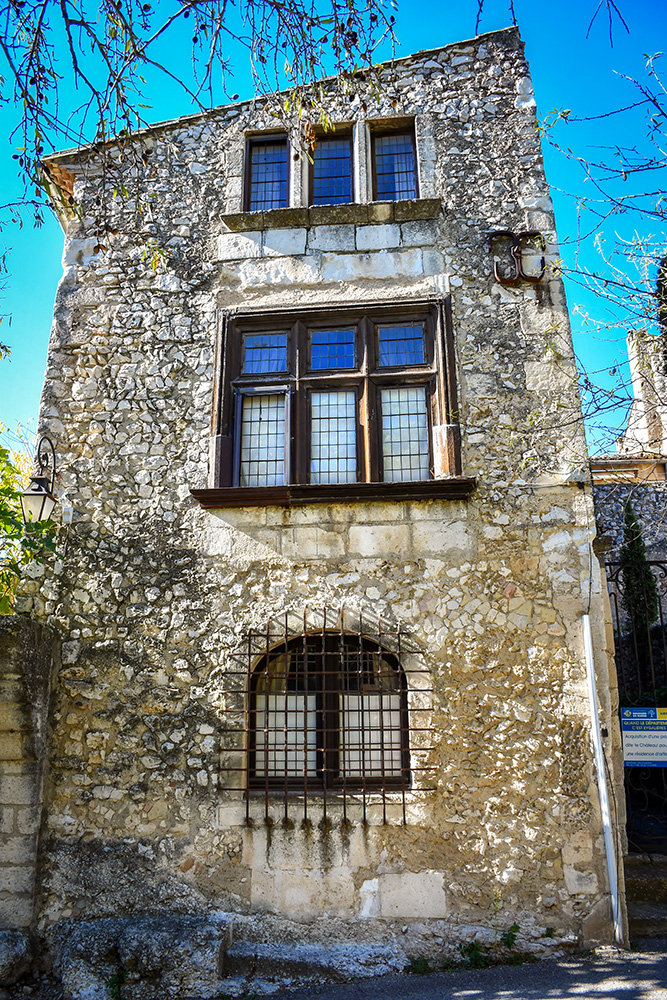
Hôtel Isnard © French Moments
Since this mansion was the most beautiful house in the village, it was nicknamed “Le Château” by the people of Eygalières.
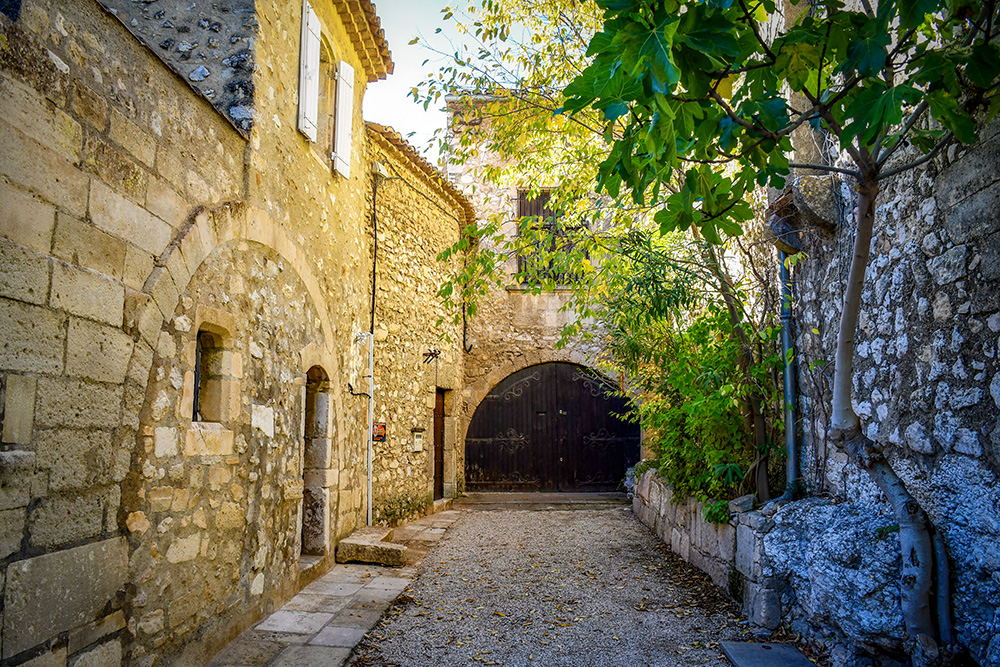
Lane by the Isnard mansion © French Moments
Auro Gate
At the top of the High Street, we reached the site of the ancient Porte de l'Auro where the medieval fortified gate opened access to the north of the village.
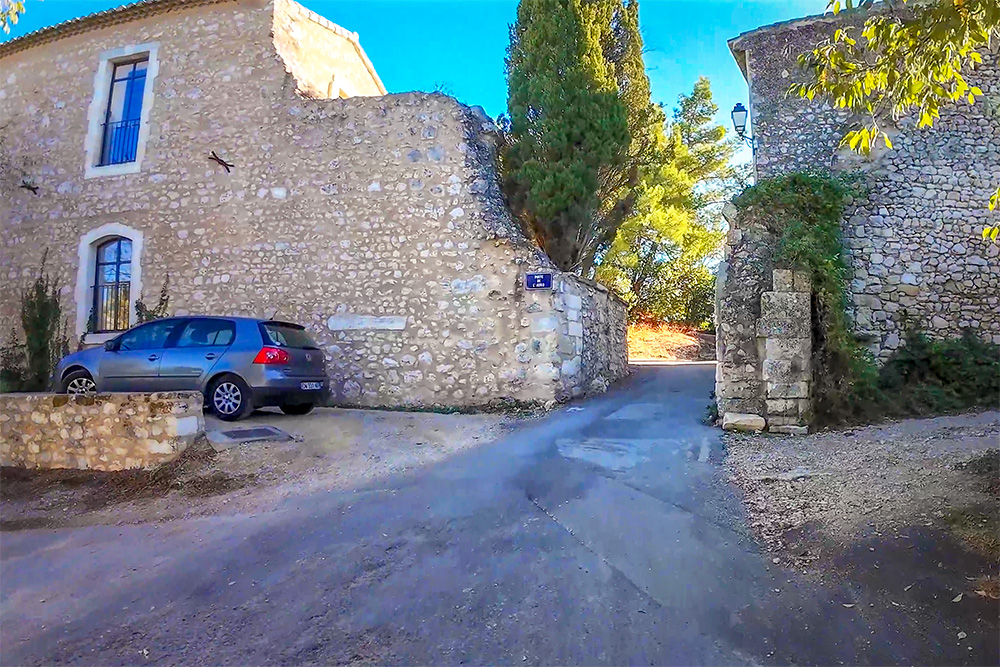
Porte de l'Auro © French Moments
Auro means "wind" in Provençal. Indeed, the fortified gate owed its name to the mistral wind that gusted through it.
Rue Safranière
From the calvary of Saint-Christol, we took a little detour on the right through the Rue Safranière before heading to the castle hill.
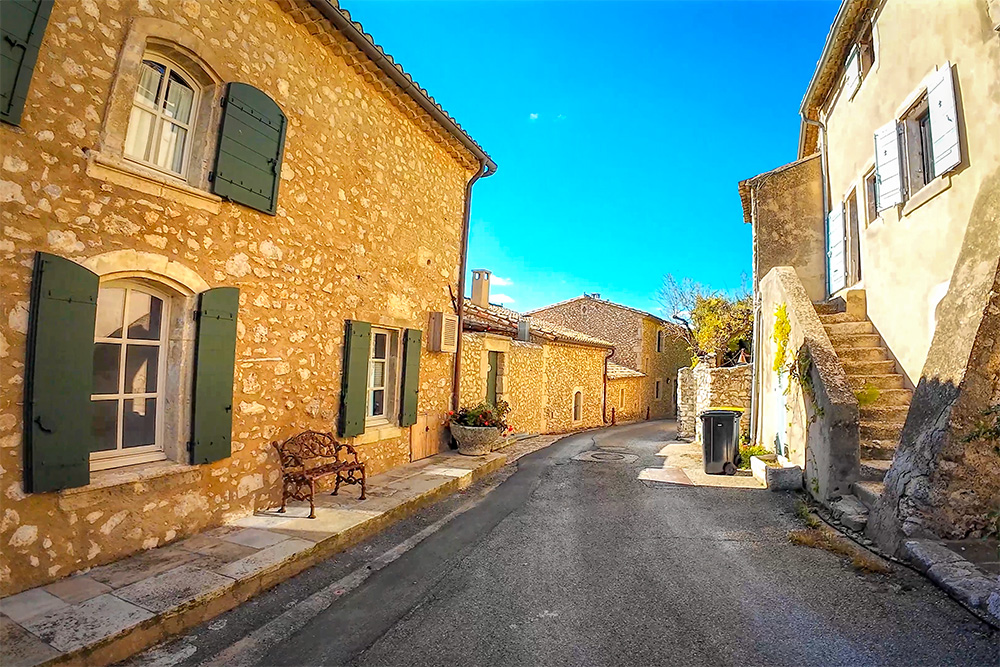
Rue Safranière © French Moments
It's a dead-end street, but it features some pretty stone houses and beautiful elements of the small heritage.
Rue Pareneuve
The Place des Pago-Tard gives access to the narrow street of Rue Pareneuve, which I decided to explore.
On the left, we saw the corner tower of the ramparts, which is behind the Hôtel Isnard in front of which we passed a few minutes ago.

Rue Pareneuve © French Moments
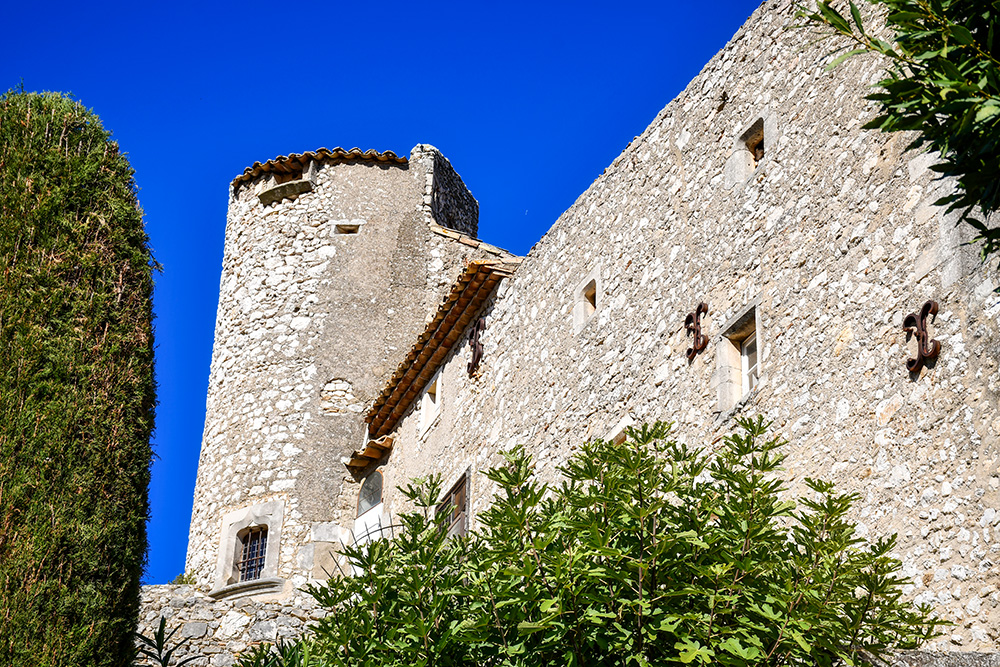
The corner tower © French Moments
Rue Pareneuve is a very picturesque street, lined with beautiful old estates, many of which have been restored and some rented as holiday homes.
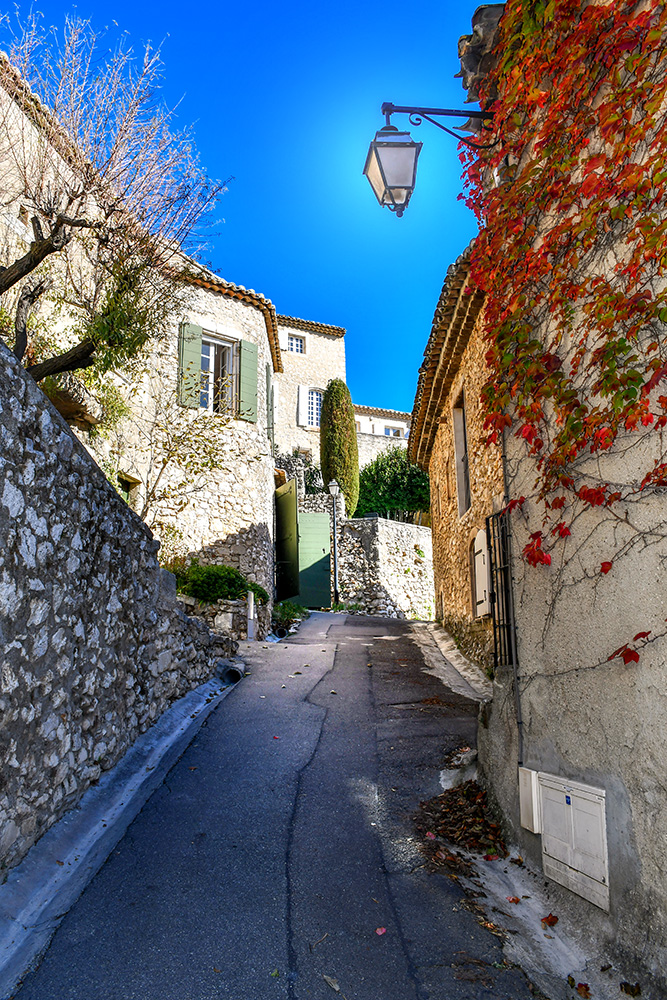
Rue Pareneuve © French Moments
The street is the ancient "camin Roumieu”, or the road to Rome.
This is where the GR653D Pilgrim's Way to Santiago de Compostela passes through today.

Rue Pareneuve © French Moments
The Castle Hill
Towards the top of the street, we took a path on the right that climbs towards the Clock Tower, at the top of the rocky promontory.
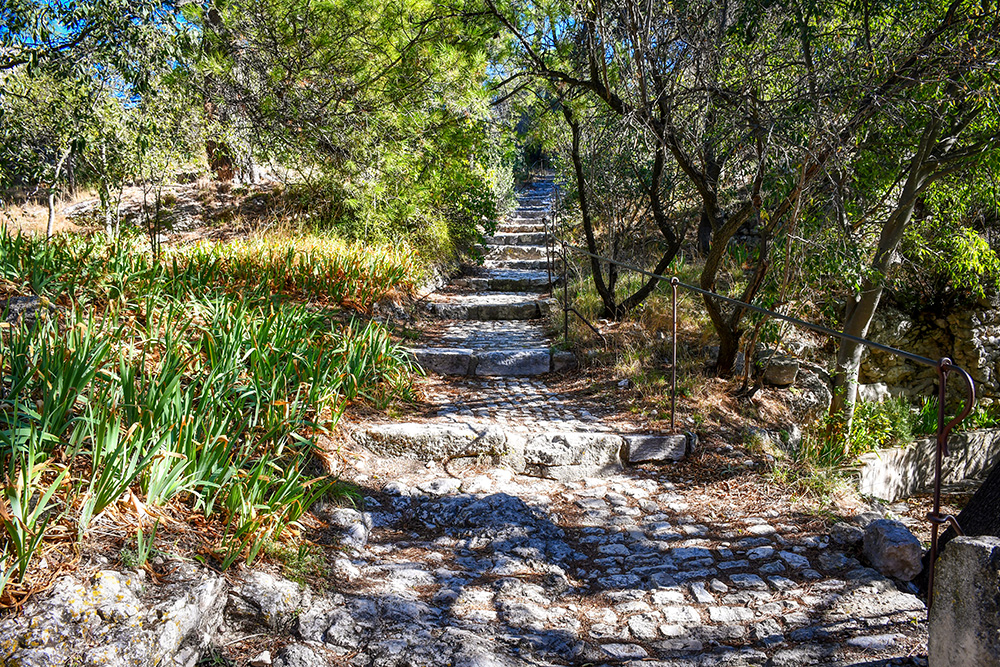
The path that climbs to the castle hill © French Moments
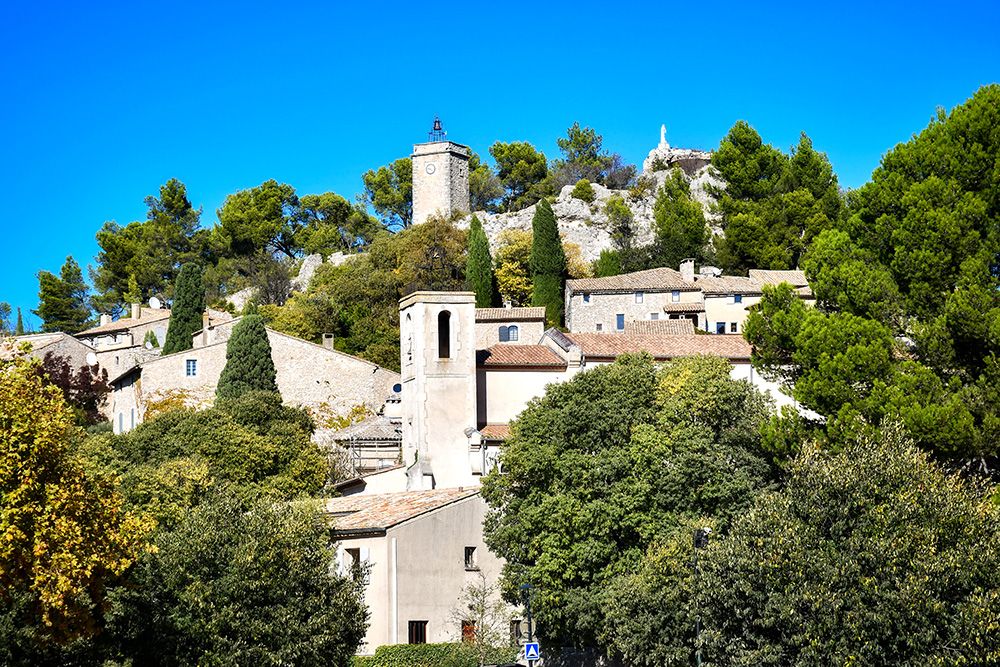
The Castle Hill © French Moments
Tour de l'Horloge
The Tour de l’Horloge is the village's Clock Tower.
The belfry dates from the end of the 17th century and was built with stones from the old feudal castle in ruins.
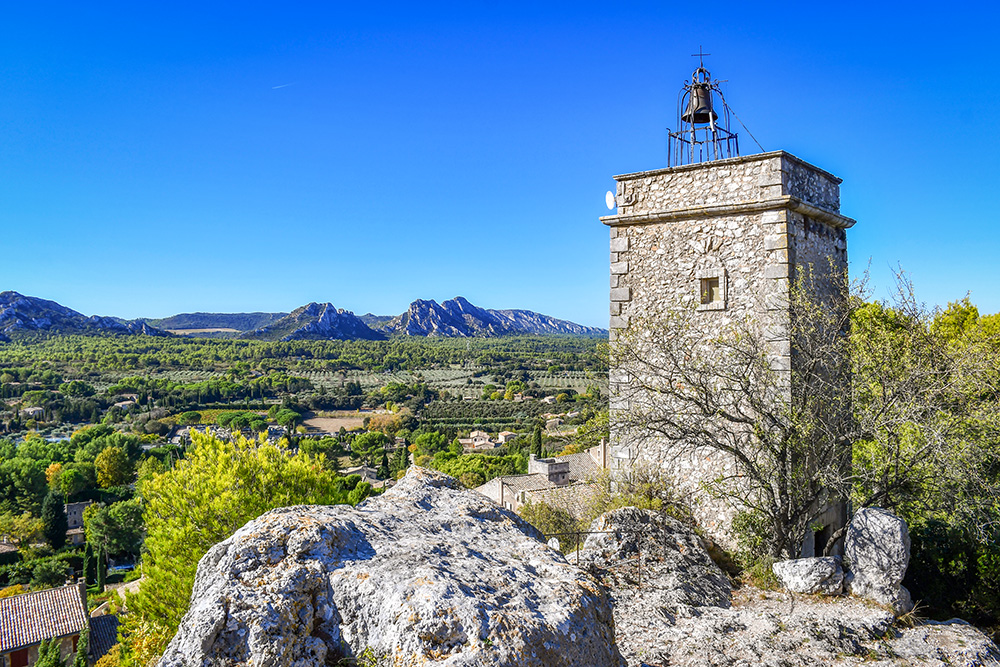
Tour de l'Horloge © French Moments
The Clock Tower is a symbol of independence for the inhabitants of Eygalières.

Tour de l'Horloge © French Moments
Once, Duke Henri II of Guise, the landowner of Eygalières, was imprisoned by the Spaniards in Segovia in 1653.
He appealed to his subjects to provide the sum needed for his release.
The ransom was paid, but the Duke could not or would not repay it; he preferred to give the lands of Eygalières to the region’s farmers.
The bell tolls the hours with its 19th-century mechanical clock.
It weighs about 350kg and strikes the musical note B.
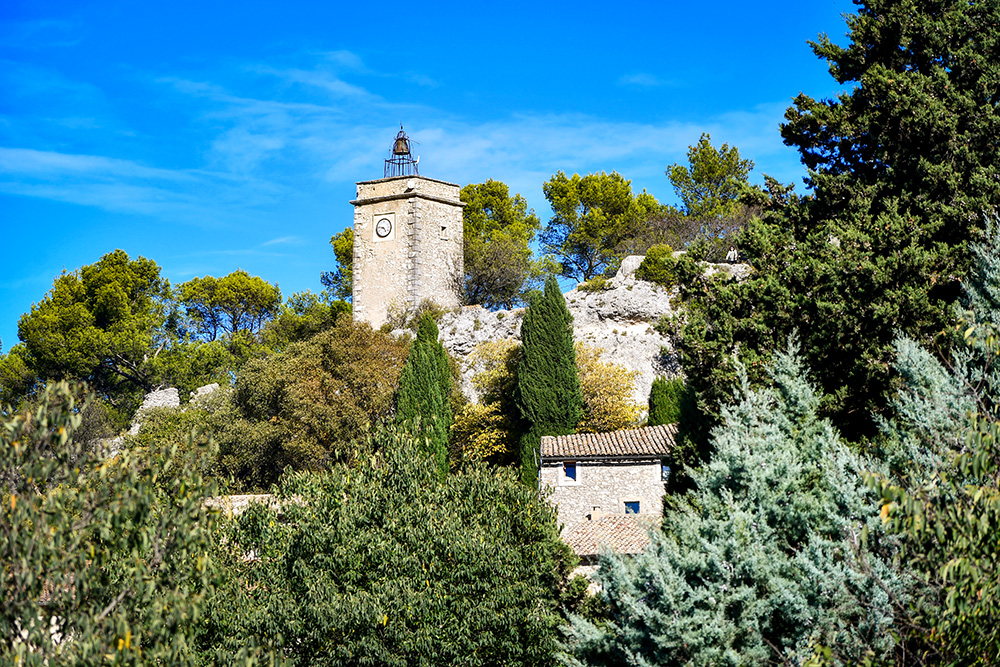
Tour de l'Horloge © French Moments
The castle ruins
This is also the site of Eygalières' feudal castle, now in ruins.
The fortress consisted of four round towers and a keep, protecting the village from dangers with a 360° view of the surroundings.
The part that remains today is the first level of the keep, which used to be a guardroom.
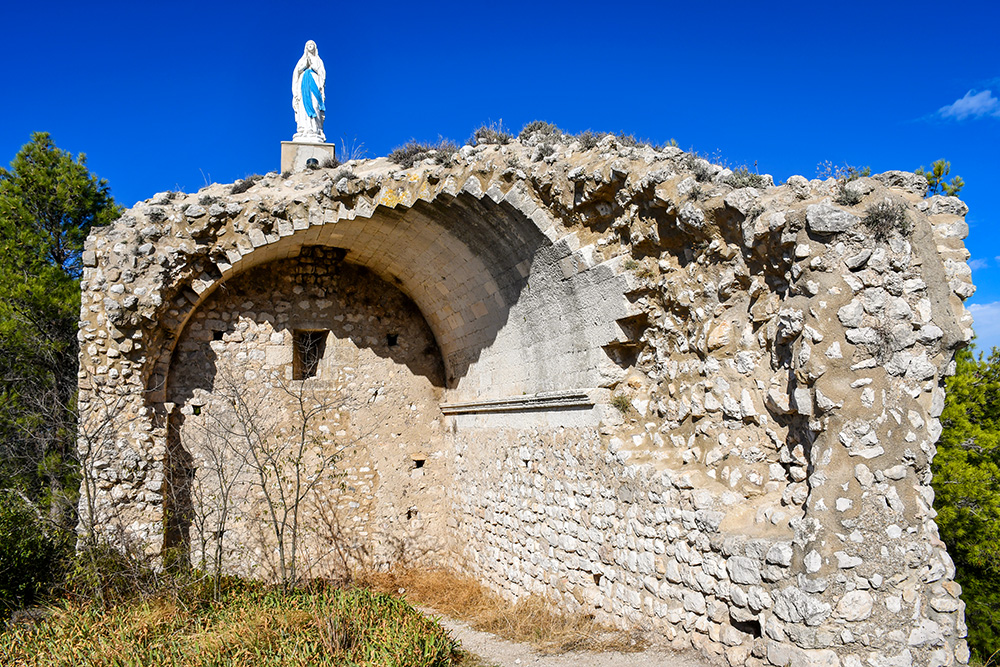
The ruins of the castle © French Moments
The statue of the Virgin Mary was placed there in 1893 to commemorate a miracle that tradition holds occurred that same year.
The panoramic view
Our ascent was rewarded with a magnificent panoramic view.
In front of us stretched the village of Eygalières and the Alpilles mountain range.
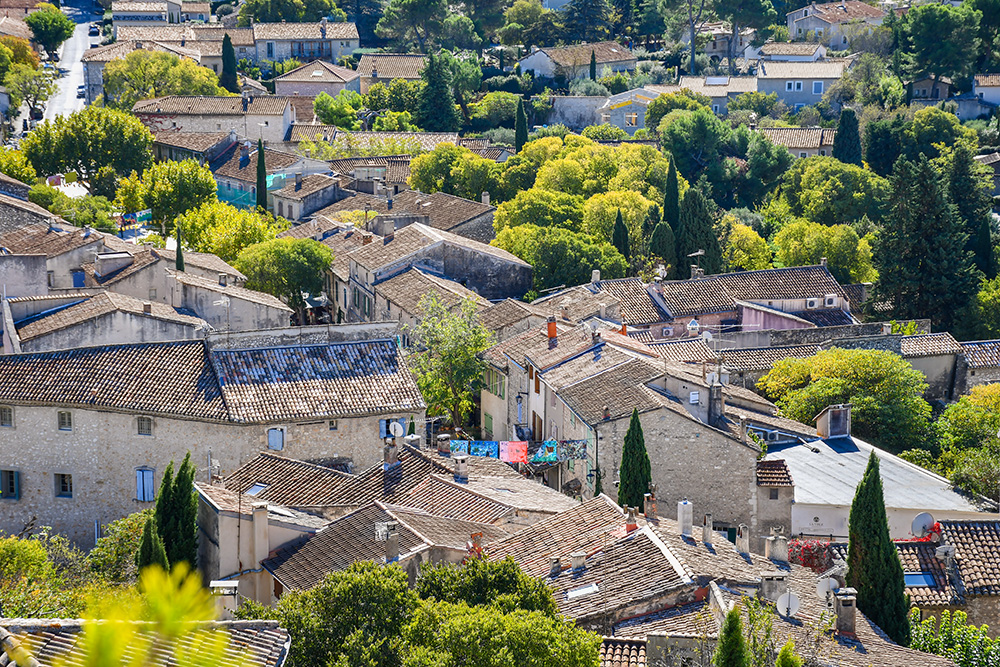
The view of the Lower Village © French Moments
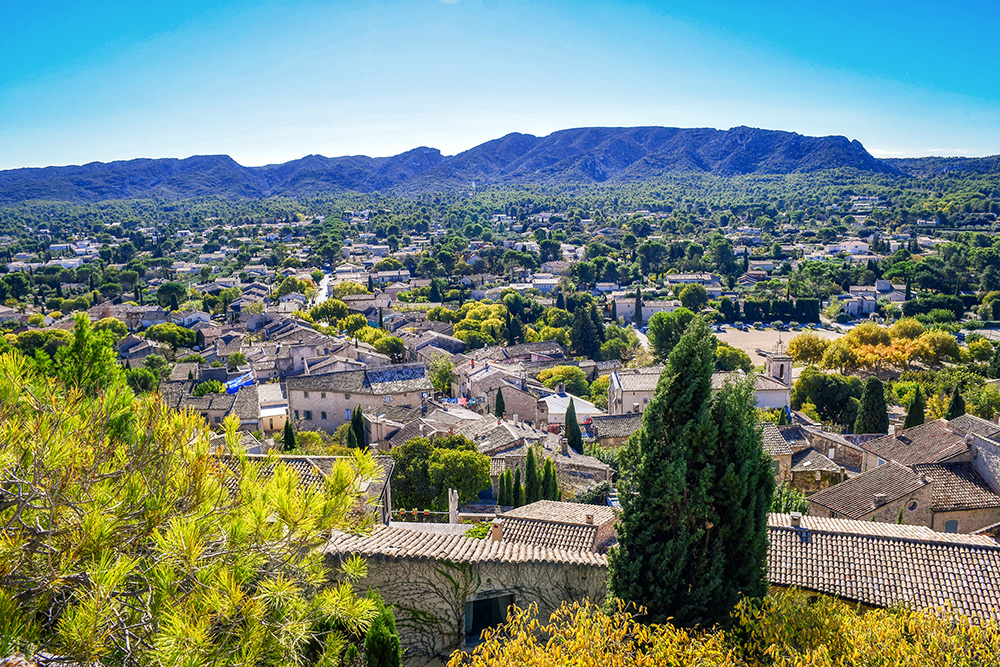
Magnificent view of Eygalières © French Moments
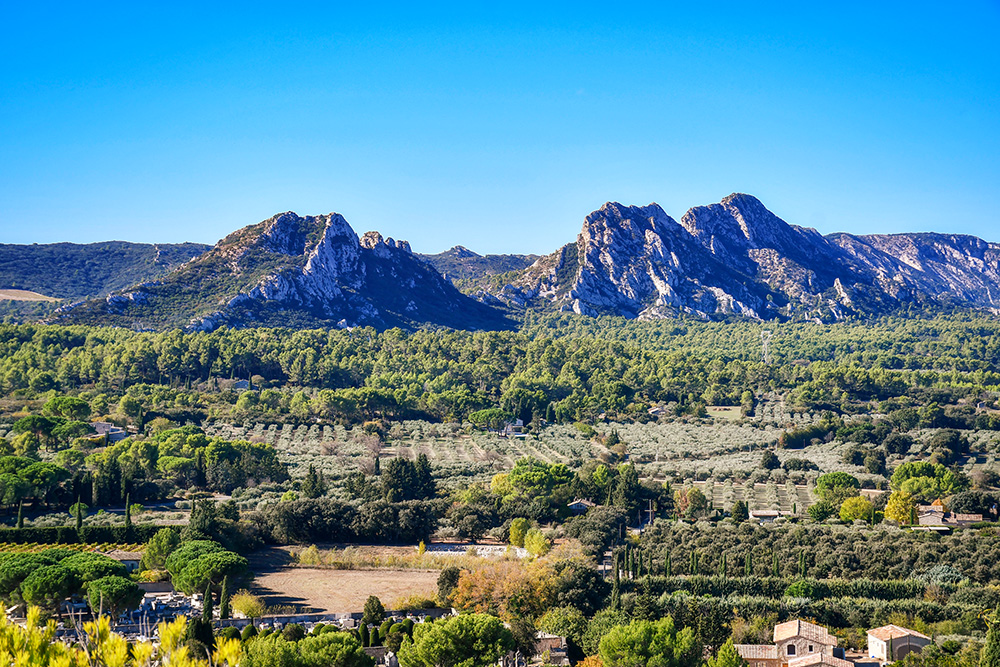
The Alpilles © French Moments
To the east of the village, the view stretches towards Orgon.
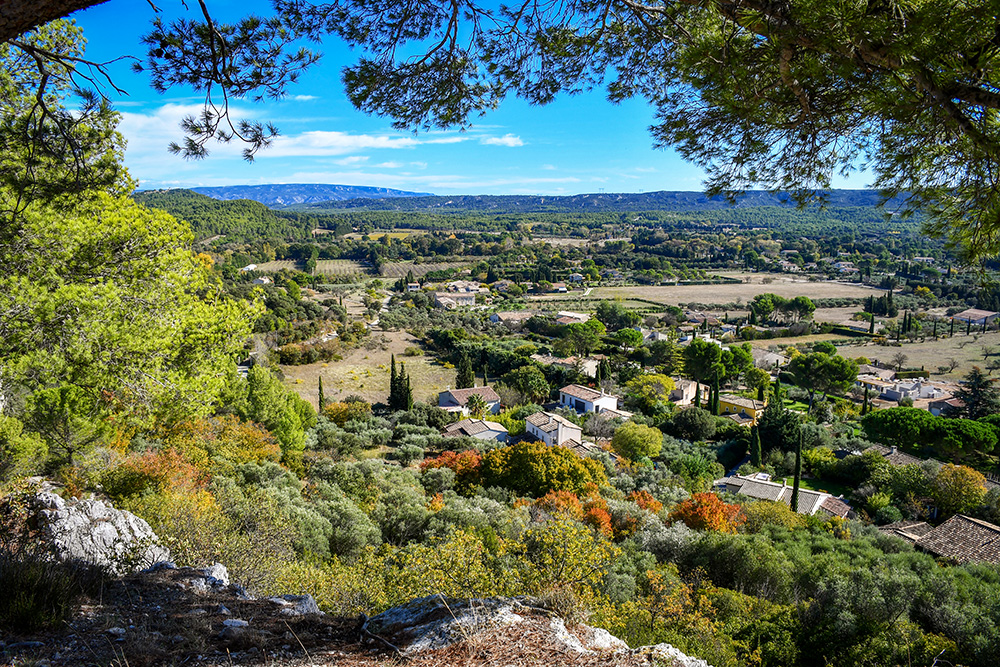
The view towards the east © French Moments
I could see the chapel of Saint Sixte with binoculars.
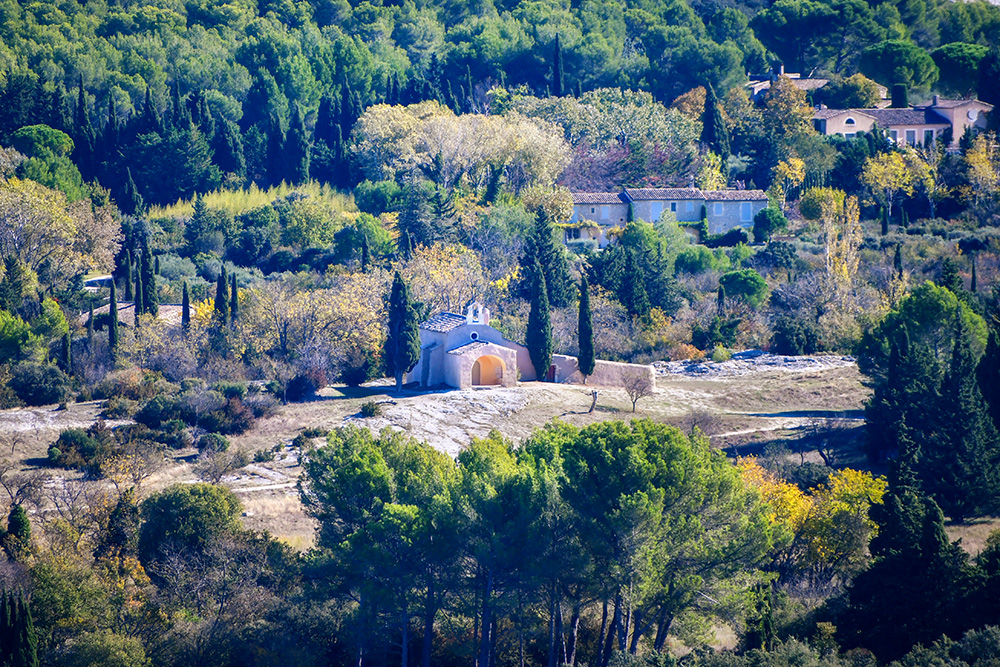
The Saint-Sixte Chapel © French Moments
We can see the Petit Luberon massif to the east:
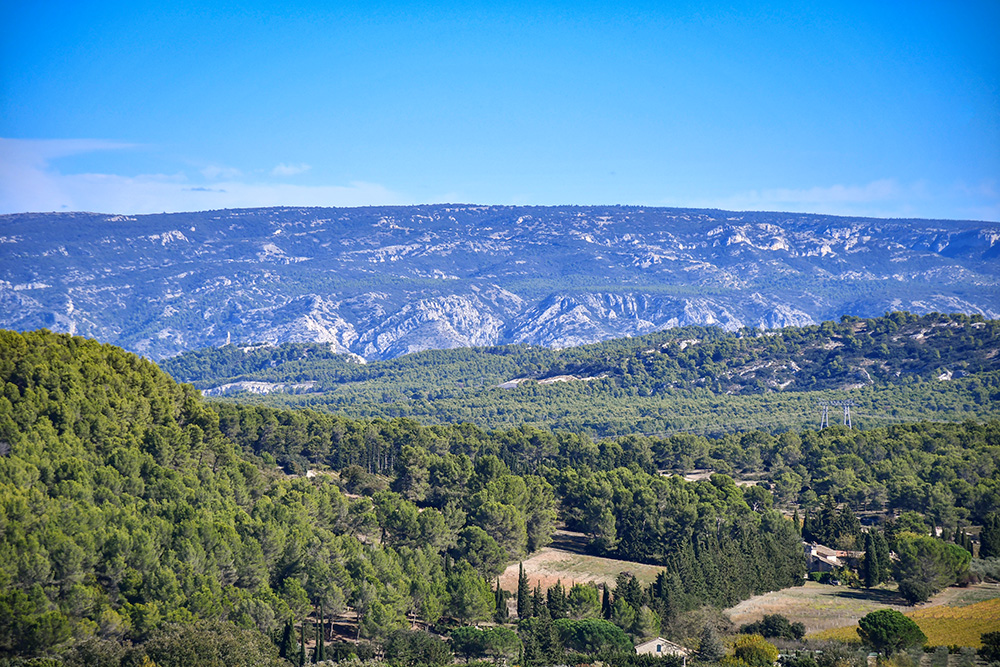
Petit Luberon © French Moments
And the bell tower of the church of Notre-Dame de Beauregard in Orgon:
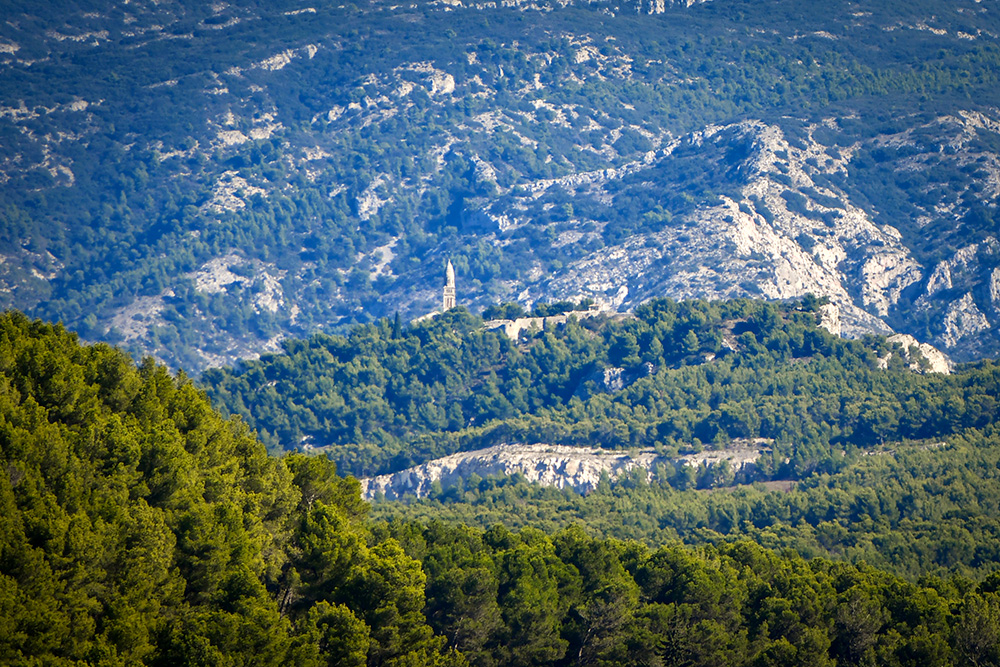
Notre-Dame de Beauregard, Orgon © French Moments
The view stretches as far as Cavaillon and the hilltop village of Gordes.
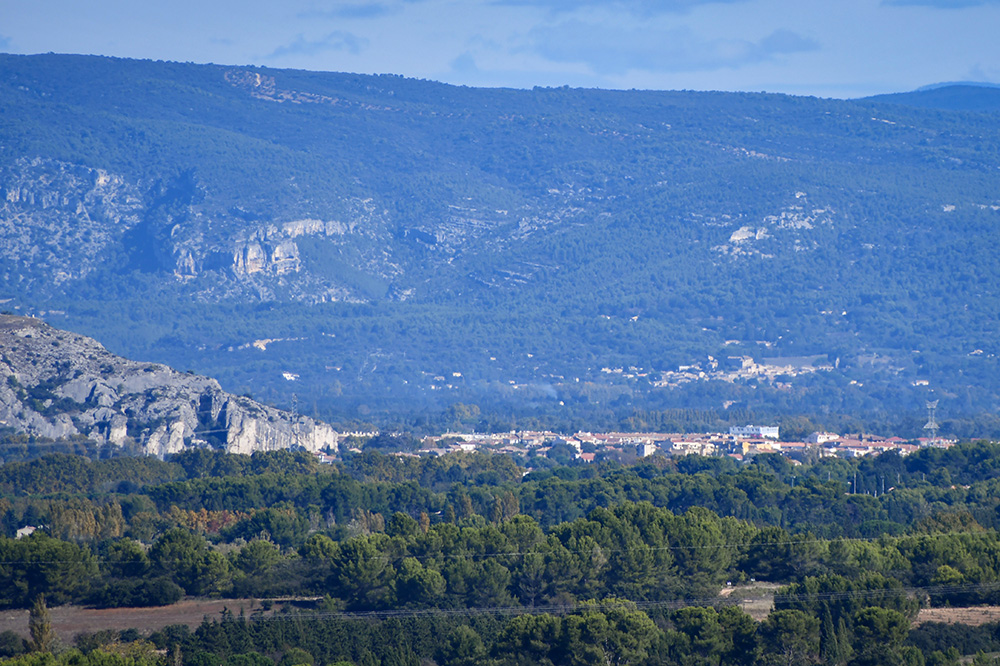
Cavaillon © French Moments
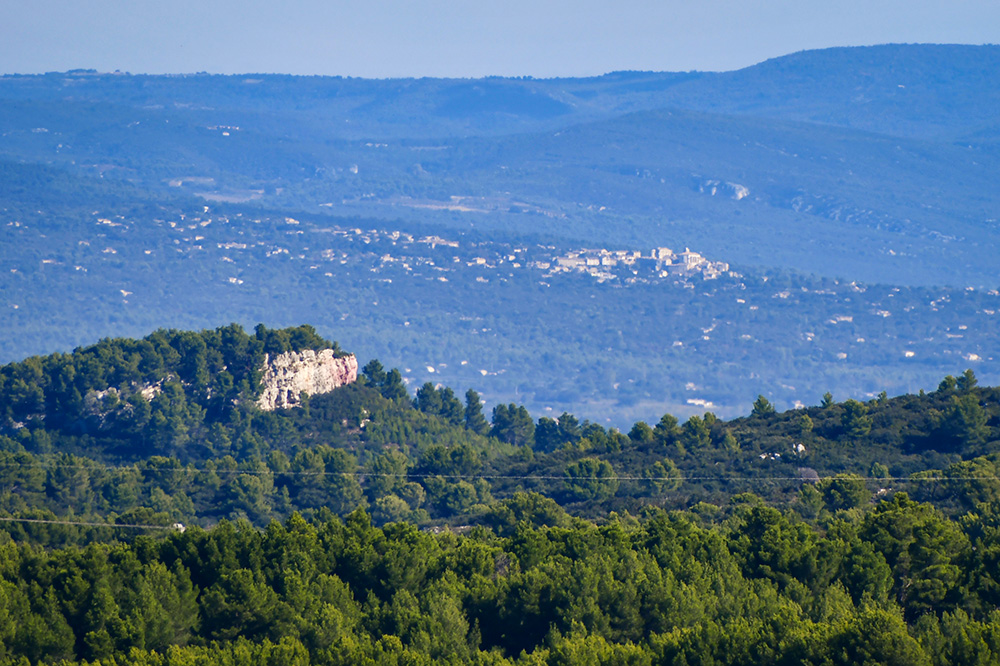
Gordes © French Moments
A bit further on, another view revealed Mont Ventoux.
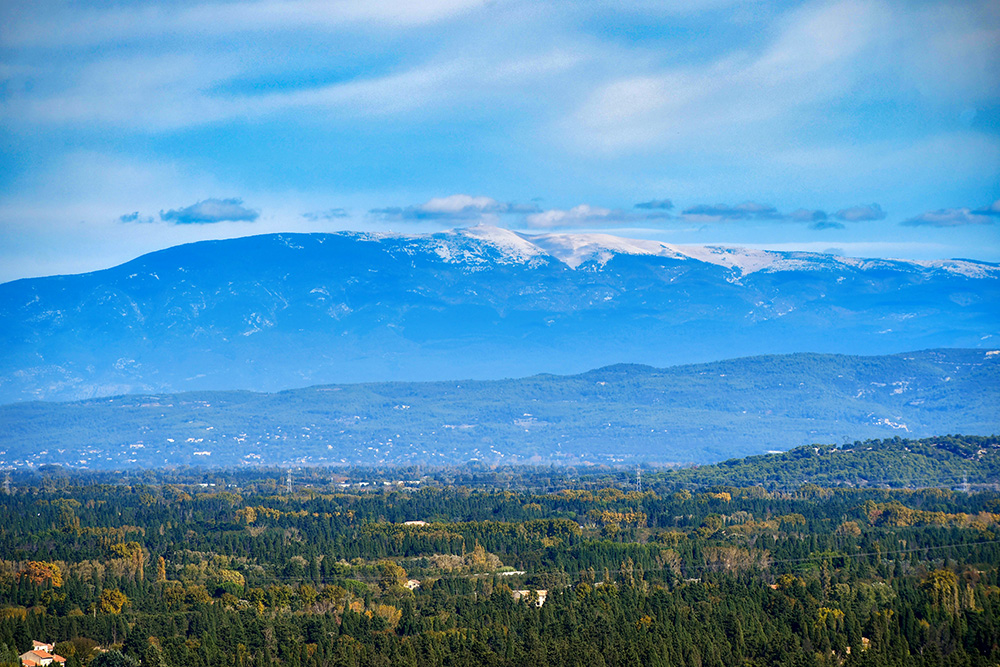
Mont Ventoux © French Moments
The Comtat Plain towards Avignon and...
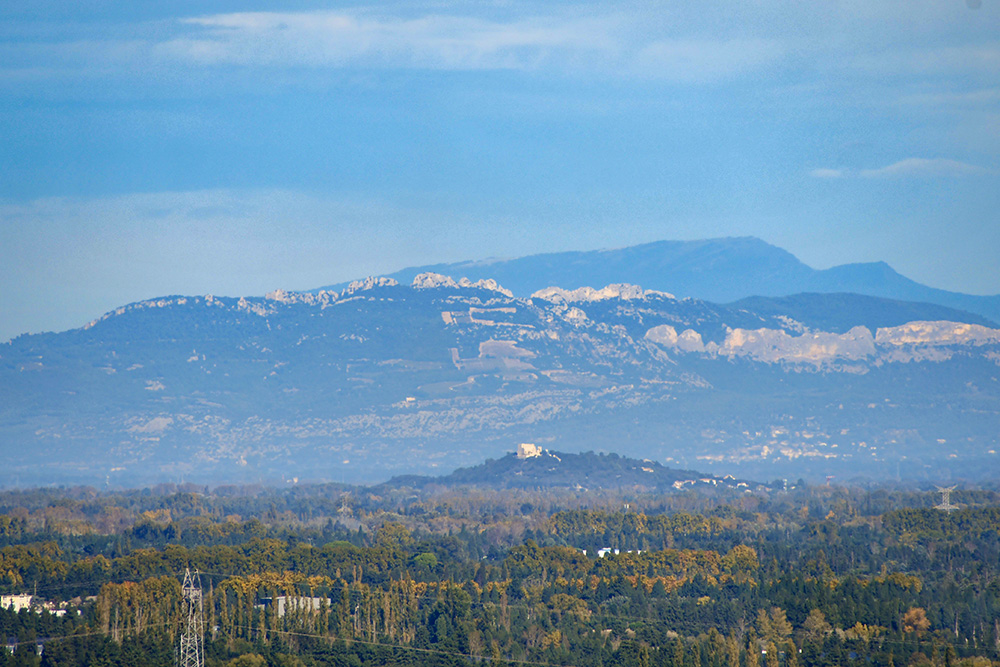
Dentelles de Montmirail © French Moments
Châteauneuf-du-Pape in the distance:
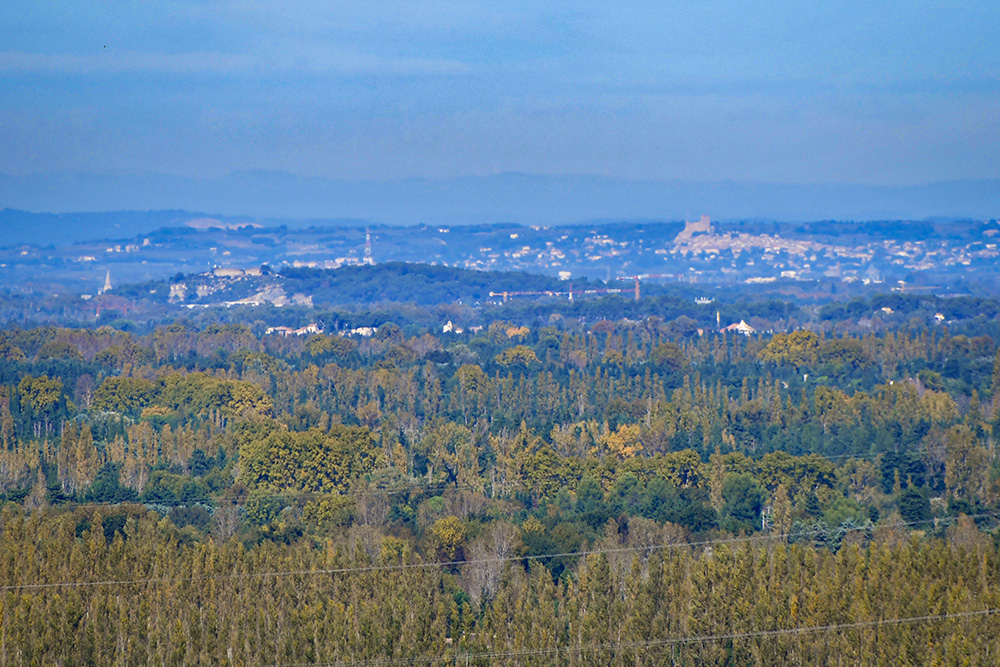
Towards Châteauneuf-du-Pape © French Moments
Chapelle des Pénitents Blancs
The Chapel of the White Penitents was built in 1581.
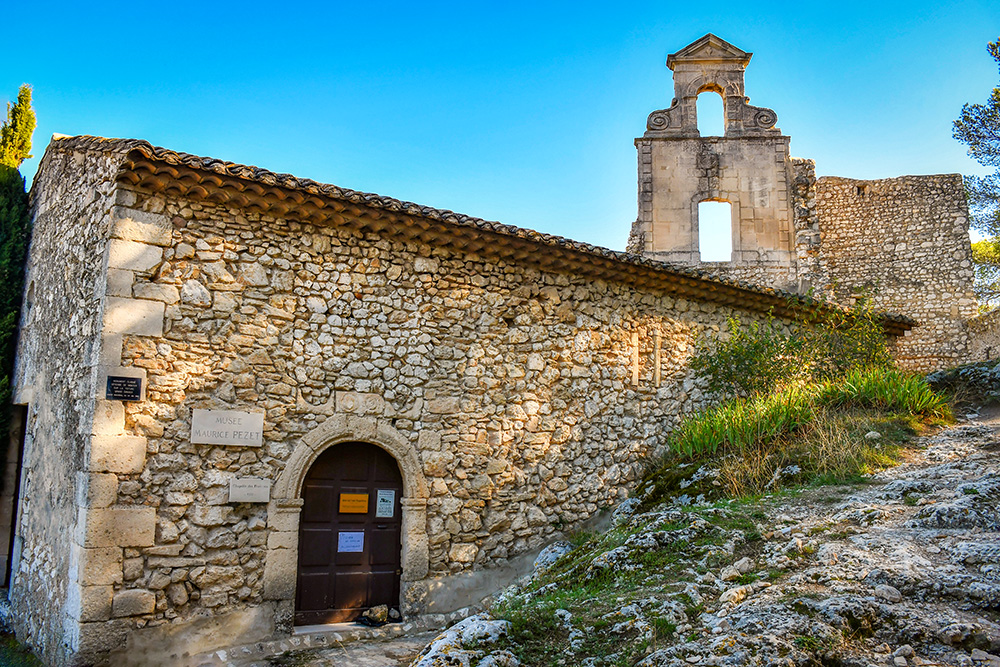
Chapel of the White Penitents © French Moments
It served as a charnel house during the plague of 1720 because the penitents were tasked with burying the victims there.
Once the brotherhood was dissolved, the chapel was left abandoned.
It was restored in 1947 by the Association Les Amis du Vieil Eygalières to house the Old Eygalières Museum.
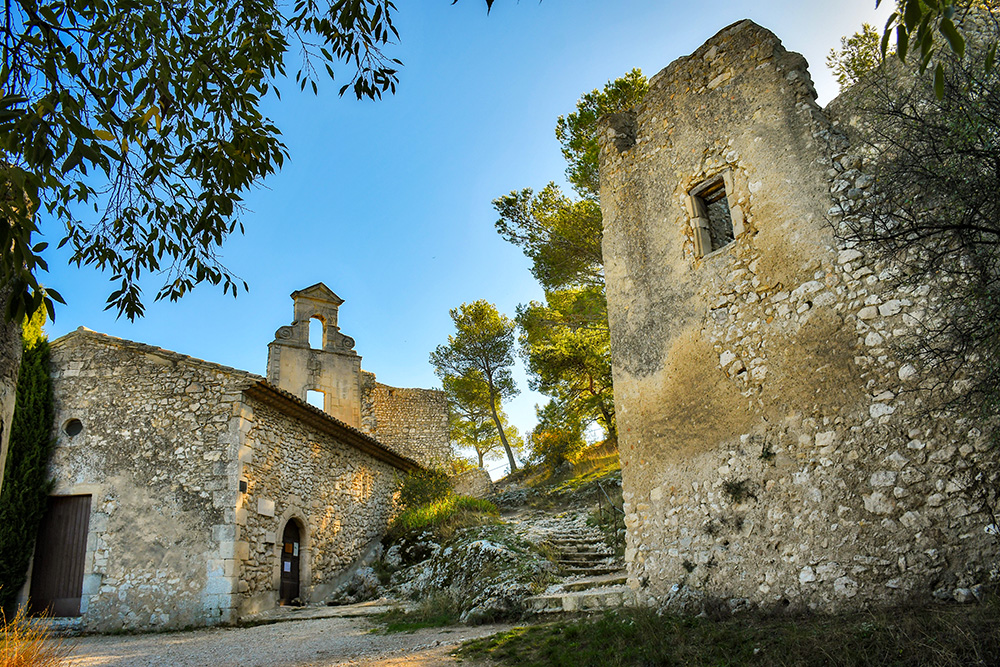
Chapel of the White Penitents © French Moments
Old Saint-Laurent Church
Adjacent to the Chapel of the White Penitents is the old Saint-Laurent church.
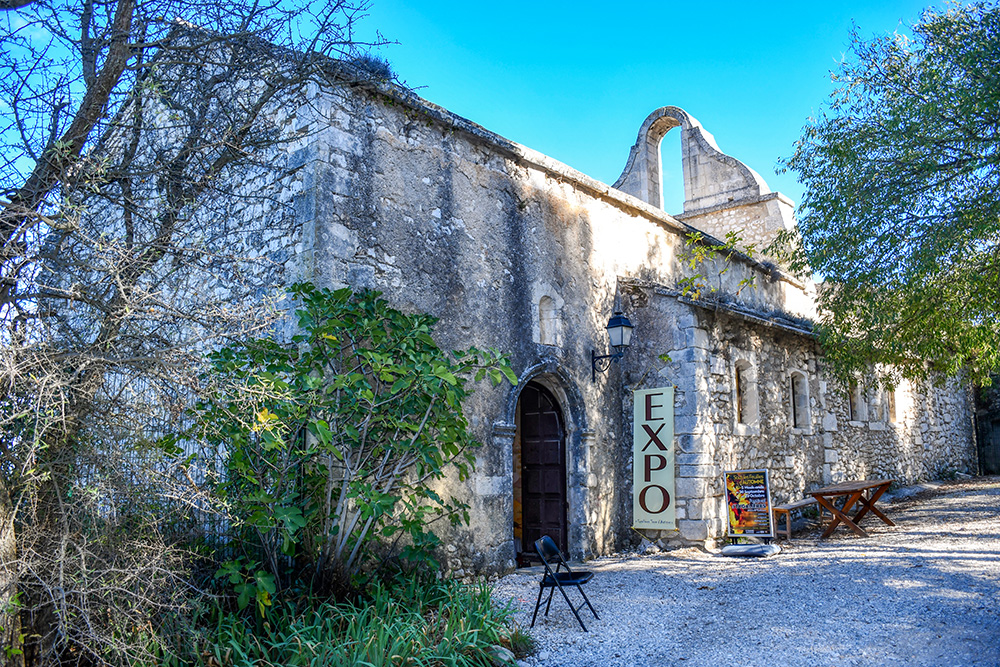
Old Saint Laurent Church © French Moments
The Romanesque church, dating from the 12th century, was built with ashlar stones and a slate roof.
During the Revolution, its bell tower was destroyed and then rebuilt a few years later under the Second Empire, but it never got its bell back.
This old parish church was replaced in 1905 by the new Saint-Laurent church, which we saw at the bottom of the village.
Today, it hosts artistic and cultural events.
Tour du Prieur
The ruins of the Tour du Prieur stand on the eastern edge of the hill.

Tour du Prieur © French Moments
This is a windmill in ruins dating back to the 17th century.
A clergyman converted it into a dovecote at the beginning of the 18th century.
The Puy de Marin Windmill
The ruined windmill of Puy de Marin is another must-see in Eygalières, although its access is not as straightforward as the castle hill.
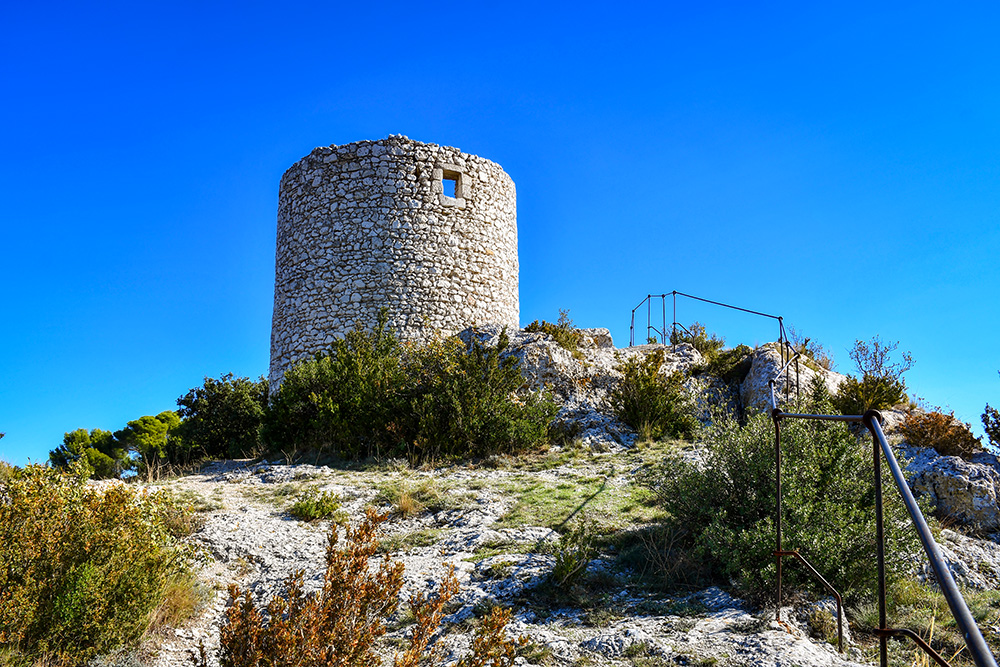
Puy de Marin Windmill © French Moments
To reach the mill, we walked down the Rue Pareneuve to the junction with the Rue des Ecoles. Then we turned right and walked along the road for around 100 metres before turning right onto a rocky path that climbs up to the old mill.
We then continued down the path on the north side to reach the Chemin de la Grotte de Tarascon. We followed this road to the right until we reached the entrance to the village at the Porte de l'Auro.
The old Puy de Marin windmill dates from the early 18th century, which was located outside the village ramparts.
The view from the Windmill
We enjoyed a 360-degree panoramic view of the Comtat plain and the Alpilles, and Eygalières below.

A view of Eygalières from the ruined windmill © French Moments
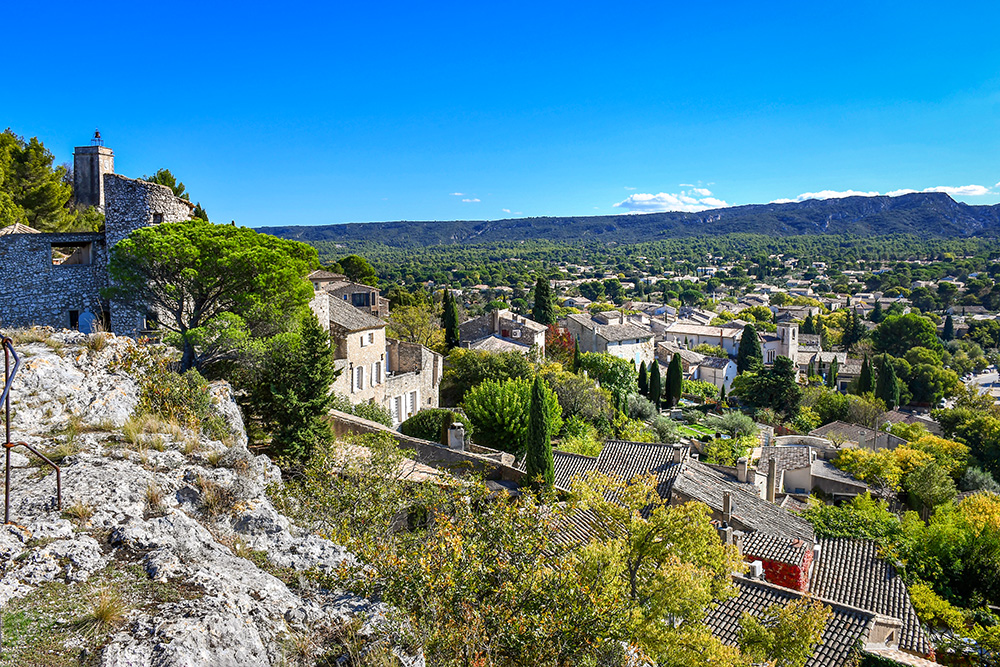
The view from the windmill © French Moments
We could clearly see the castle hill and the Clock Tower on which we were earlier.

The Castle Hill of Eygalières © French Moments
In front of us stood the corner tower of the ramparts, which was transformed into a dovecote.
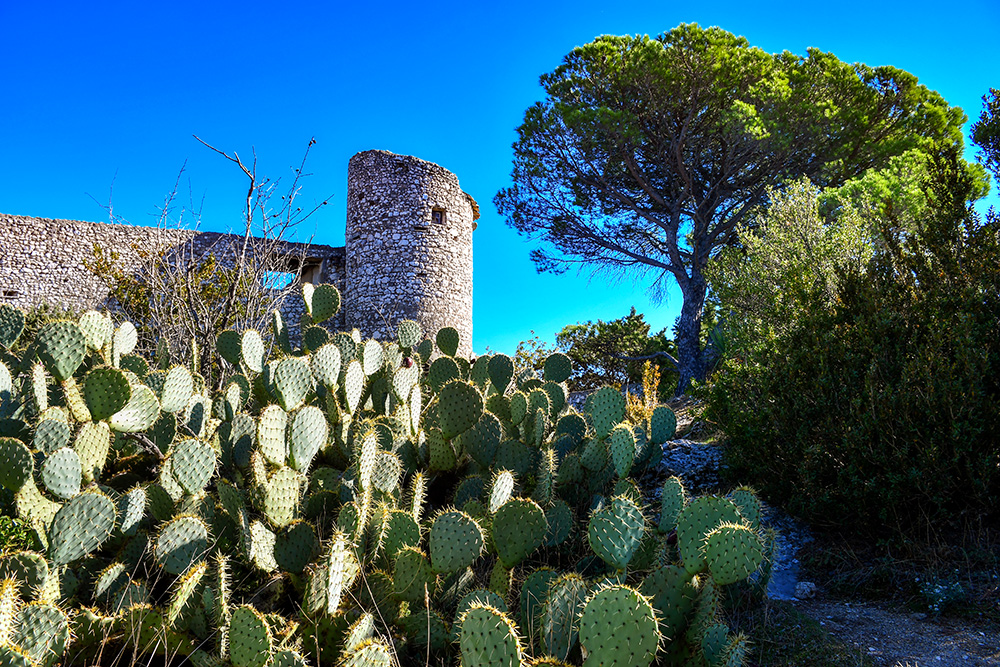
The corner tower © French Moments
Chapelle Saint-Sixte
The chapel is placed on a mound and framed by cypress trees. You have surely already seen it in coffee-table books or tourist brochures. It's an iconic image of Provence and also of Provençal Romanesque art.
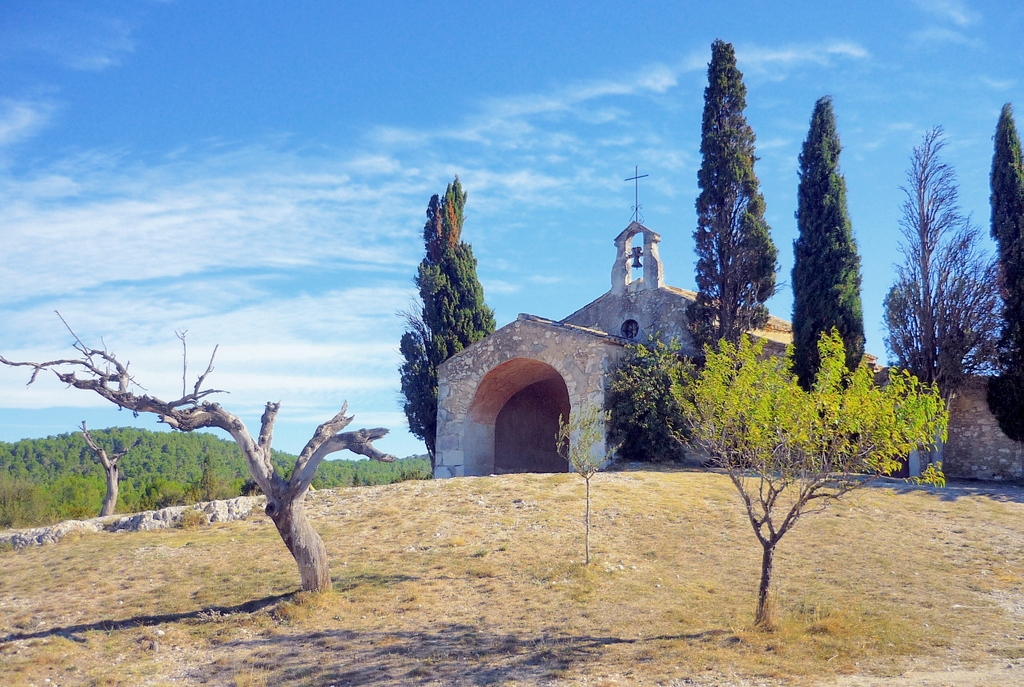
The Saint Sixte chapel © French Moments
Before leaving Eygalières, we wanted to visit the Chapelle Saint-Sixte in the surroundings of Eygalières.
Although this was our first visit to the old village of Eygalières, we stopped at the chapel many times on our way between the Luberon and the Alpilles.
The Saint Sixte chapel is a must-see place in the surroundings of Eygalières, 1.4 km from the village.
From the chapel, you can see the perched village of Eygalières, against the backdrop of the Alpilles in a romantic setting that evokes Greece.
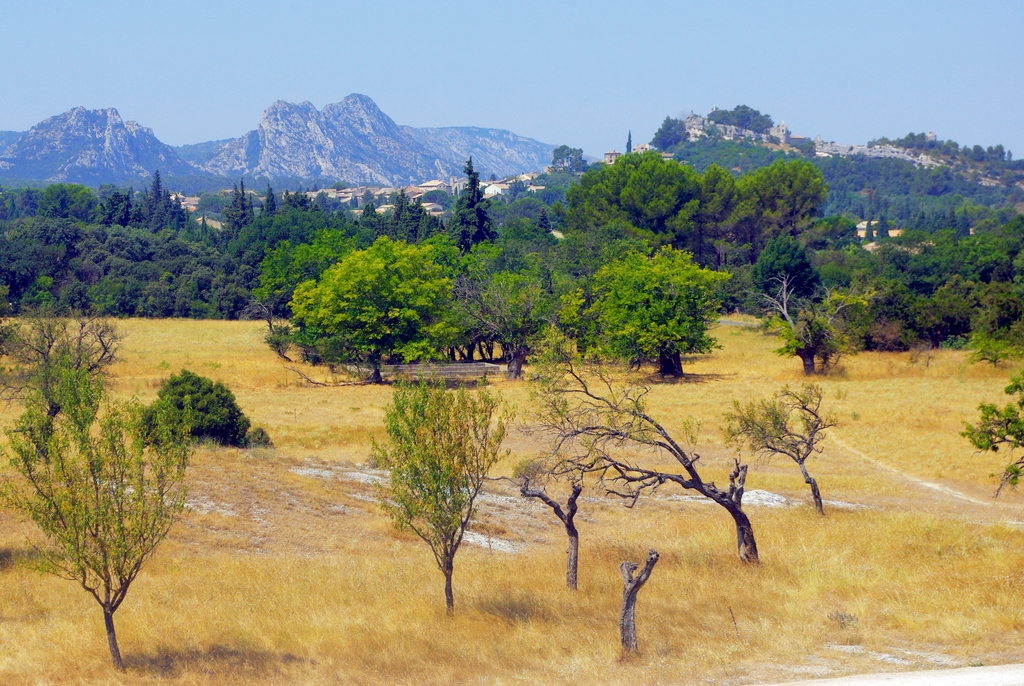
The view to Eygalières and the Alpilles from the chapel © French Moments
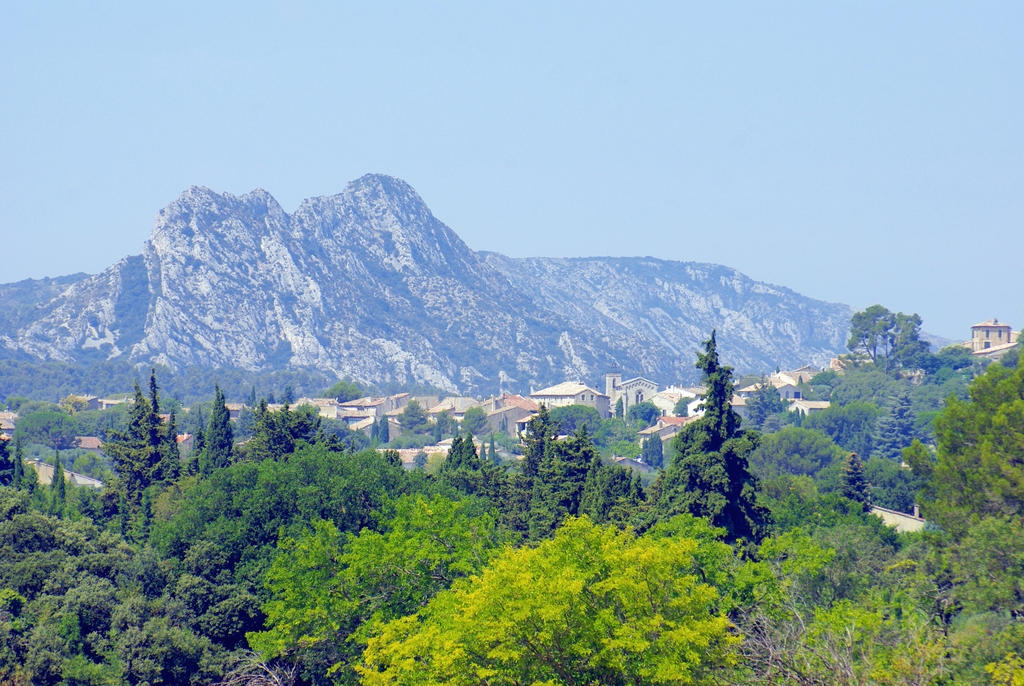
Eygalières and the Alpilles © French Moments
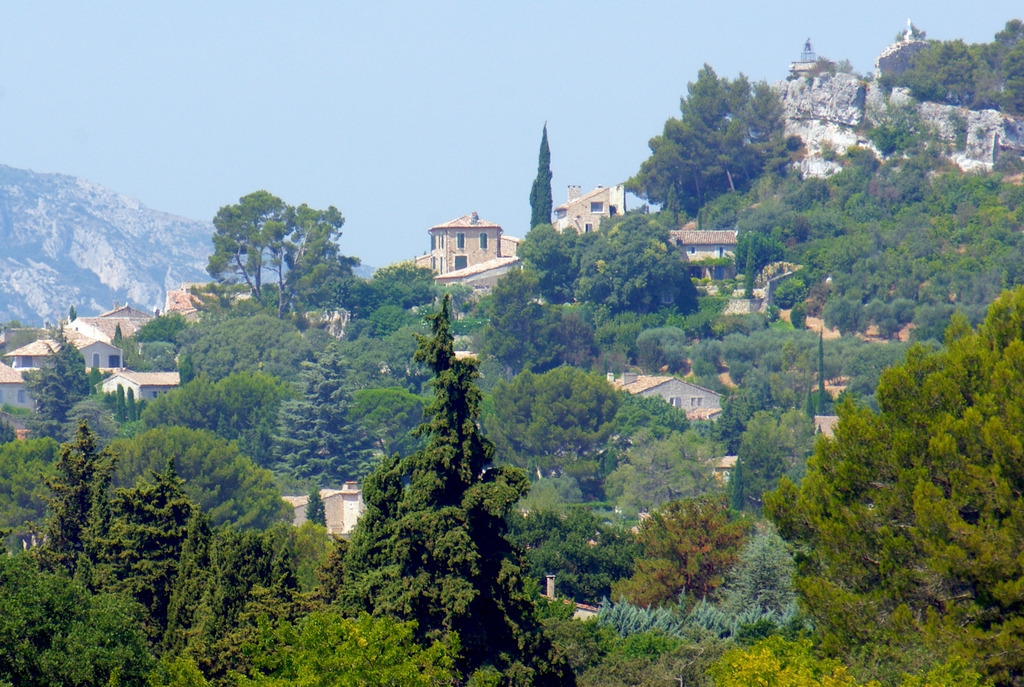
The village of Eygalières © French Moments

Eygalières and the Alpilles © French Moments
A bit of history
The chapel was built on the site of an ancient pagan temple dedicated to healing waters.
However, its name refers to Sixtus II, a 3rd-century pope of Greek origin.
Sixtus II was beheaded in 258 AD during the persecutions led by Emperor Valerian.
The first reference to the Saint-Sixte chapel dates from 1155 in a bull issued by Pope Adrian IV.
The Easter tradition of 'Roumavage'
In April 1222, the chapel was transferred to the abbey of Mollégès. This is the date of the Easter Tuesday pilgrimage, which is still practised today.
Every year in Eygalières, during the "Roumavage" on Easter Tuesday, the saint's statue is carried in procession from the parish church to the chapel.
The "Roumavage" pilgrimage means "roumiéu viage", or "journey to Rome".

View from the porch of the chapel © French Moments
Since 1222, the patron saint has been asked to prevent drought and its consequences.
It is said that there was once a spring here, which was diverted to supply the town of Arles, probably by the 4th Roman legion.
The exact starting point of the Roman aqueduct from Arles on the northern slopes of the Alpilles is unknown. However, what we know with certainty is its course from Mas Créma in the commune of Mollégès. It could well have been fed from a spring very close to the Saint-Sixte chapel.
Features of the chapel
Originally, its facade was the bell-wall, which still exists today. However, the bell was added in 2008.
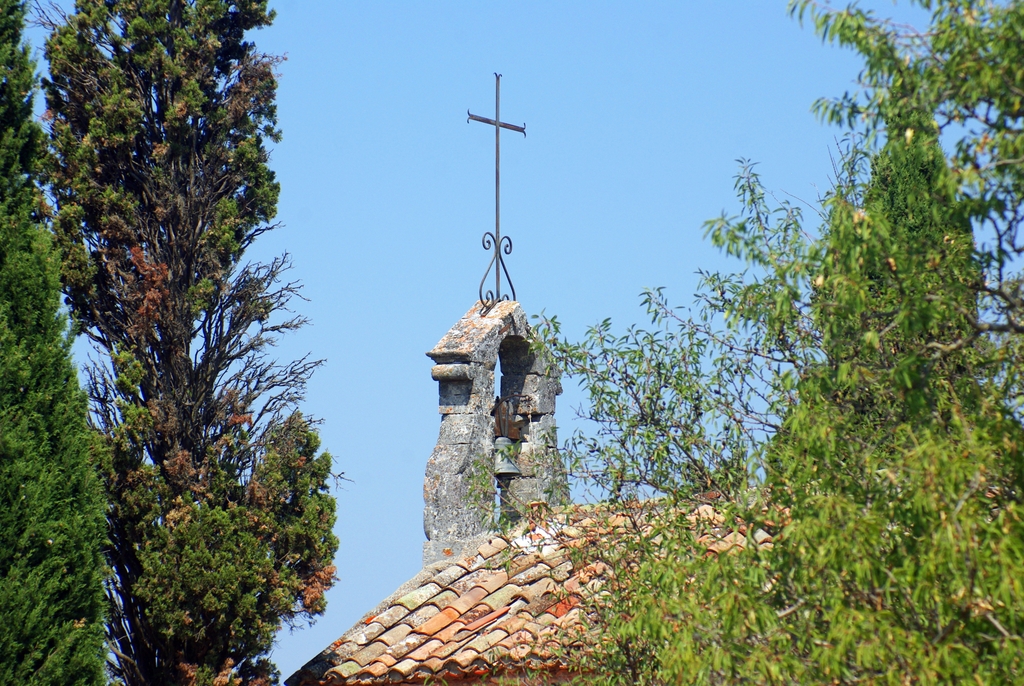
The bell tower of the Saint Sixte chapel © French Moments
The porch was added during the plague in 1629 to serve as a guardhouse, while the chapel was used as a lazaretto, or infirmary, to monitor the health of travellers. The adjoining hermitage surrounded by a wall dates from the same period.
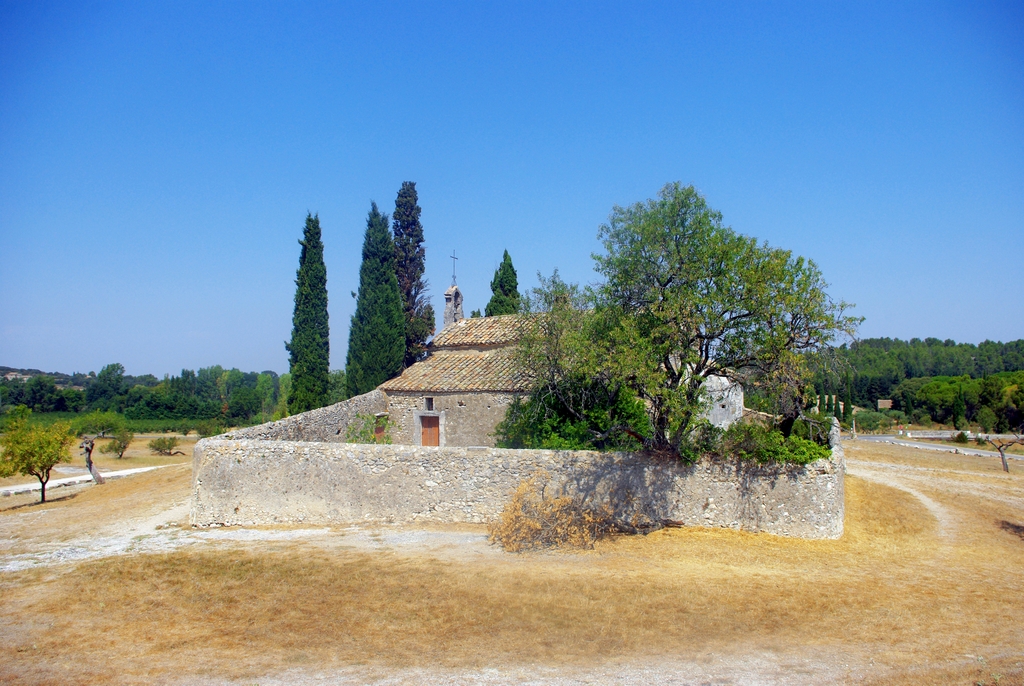
The Saint Sixte chapel © French Moments
Unfortunately, you cannot visit the interior except during the heritage days.
Like many churches and chapels in Provence, they are victims of vandalism, which leads to their closure to protect them.
Find out more
Here are some pages from our blog and other websites to find out more about this Provencal destination.
- Discover the mountain range of the Alpilles
- Find out more about Provence-Alpes-Côte d'Azur
- The official tourist office of the area
- Click here to book your accommodation in Eygalières or browse the map below:
Shops and restaurants in Eygalières
Here is a list of shops and restaurants in Eygalières. Most of them are located in the main street, ie. Rue de la République. Please note that this list is indicative and may change over time.
Shops and amenities in Eygalières:
Boucherie (butchery)
100 Rue de la République - Closed on Sunday and Monday
Fromagerie Chez Emily (cheese shop)
124 Rue de la République - Closed on Monday and Tuesday
La Cave de Vin de Gilles (wine shop and delicatessen)
10 Avenue Jean Jaurès - Open every day (Closed on Sunday afternoon) - website
Cave de Vin de la Tible (wine shop)
15 Rue des Ecoles - Closed on Sunday and Monday - website
Supérette - Vival (convenience store)
86 Rue de la République - Open every day (Closed on Sunday afternoon)
Presse - Librairie de l'Avenir (newsagent)
159 Rue de la République - Open every day (Closed on Sunday and Monday afternoons)
Pharmacie Chabaud (pharmacy)
40 Rue de la République - Closed on Sunday
Agence postale (post office)
186 Avenue Charles de Gaulle (Maison Bel Âge) - Closed on Saturday afternoon and Sunday - website
Médiathèque (library and media centre)
120 Rue de la République - Closed on Monday, Thursday and Sunday - Access to the media library and consultation of documents on site are free. However, to borrow documents from home, you need a subscription. website
Office de Tourisme (Tourist Board)
120 Rue de la République - Closed on Sunday and Monday - website
Cafés and restaurants in Eygalières:
Restaurant Paulette (restaurant)
130 Rue de la République - facebook
Maison Hache (restaurant)
30 Rue de la République - website
Bistrot L'Aubergine (restaurant)
34 Avenue Jean Jaurès - website
L'Opale (Domaine La Pierre Blanche) (restaurant)
2950 Route d'Orgon - website
Brasserie Le Progrès (restaurant)
6 Rue de la République - facebook
Restaurant Karine (restaurant)
34 Place Marcel Bonein - website
Le Bistrot du Brau (La Bastide d'Eygalières) (restaurant)
765 Chemin de Pestelade - website
Bistrot Quàsi (restaurant)
89 Rue de la République
Le Café de la Place (café)
Place Marcel Bonein - facebook
The nearest supermarkets to Eygalières:
Intermarché in Orgon (8 km / 10 mi) - website
Intermarché in Saint-Rémy-de-Provence (13 km / 15 mi) - website
Aldi in Saint-Rémy-de-Provence (13 km / 15 mi) - website
Auchan in Senas (16 km / 18 mi) - website
What to do in the Alpilles and region
Be inspired by a list of things to do in the Alpilles and surroundings:
Pin Eygalières on Pinterest







Beautiful, indeed, Pierre. And I've never heard of it, so it's a brand new discovery. Merci!
You’re welcome Ellen. Eygalières is becoming a trendy place to be in this part of Provence!